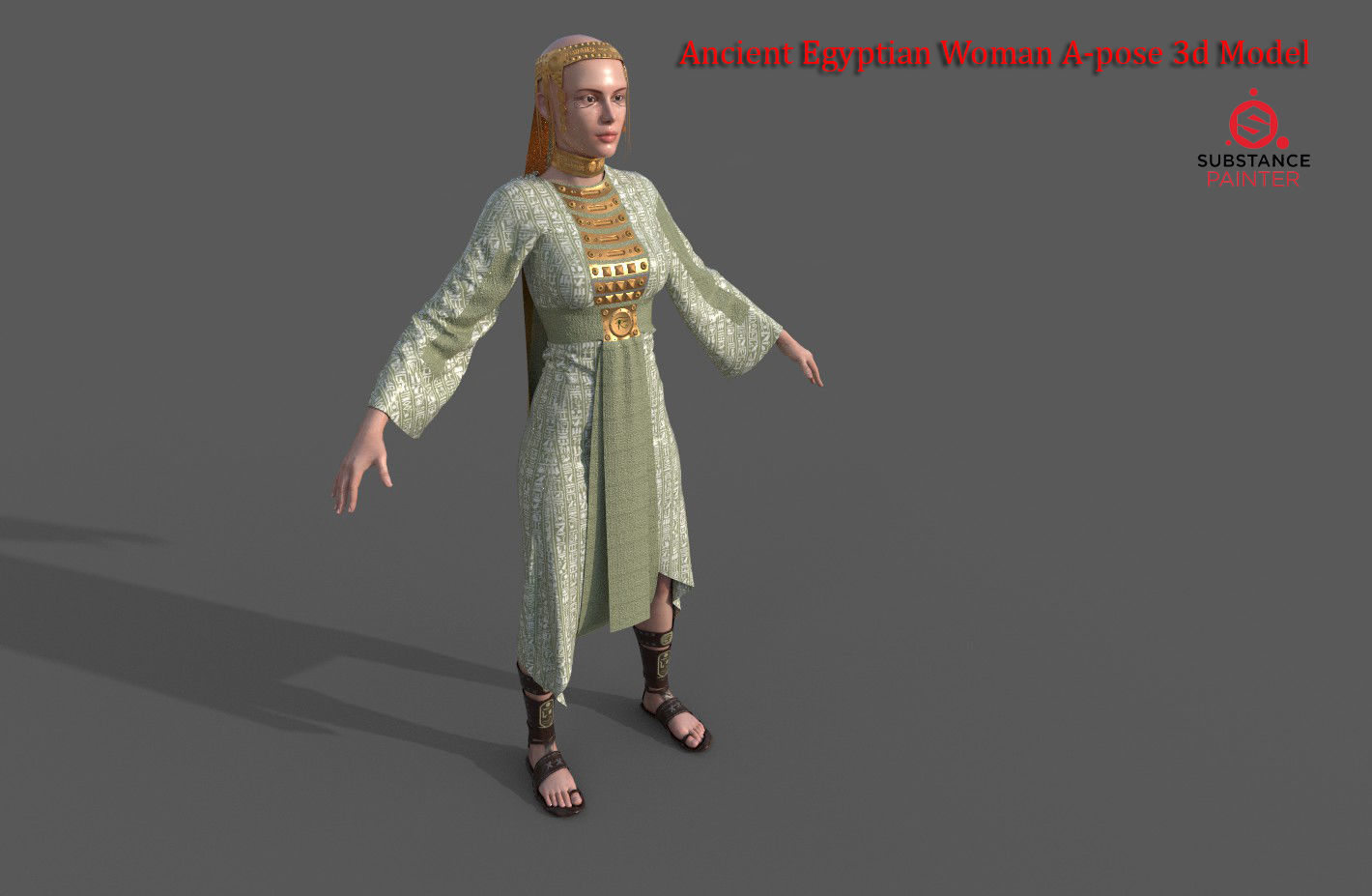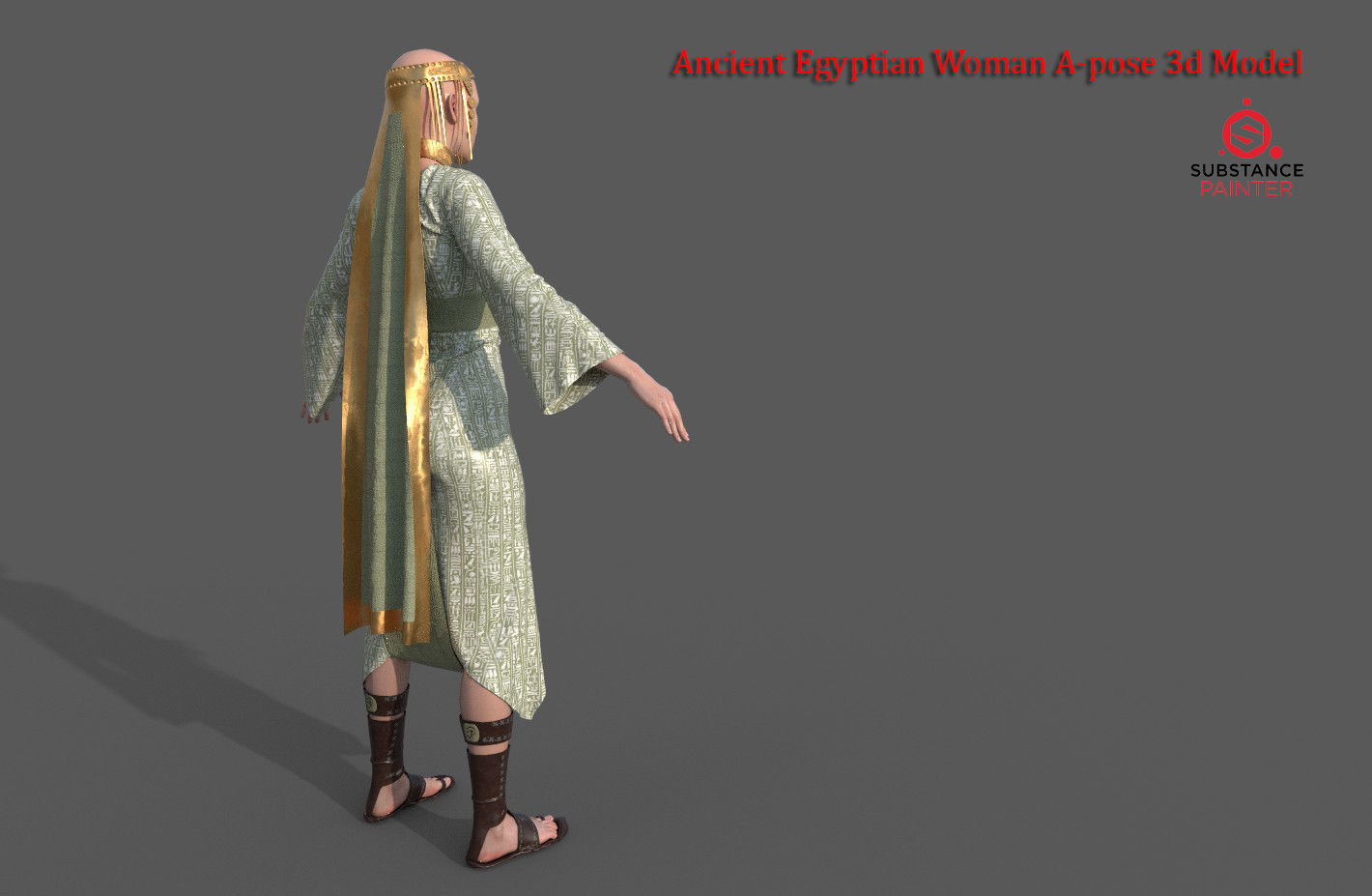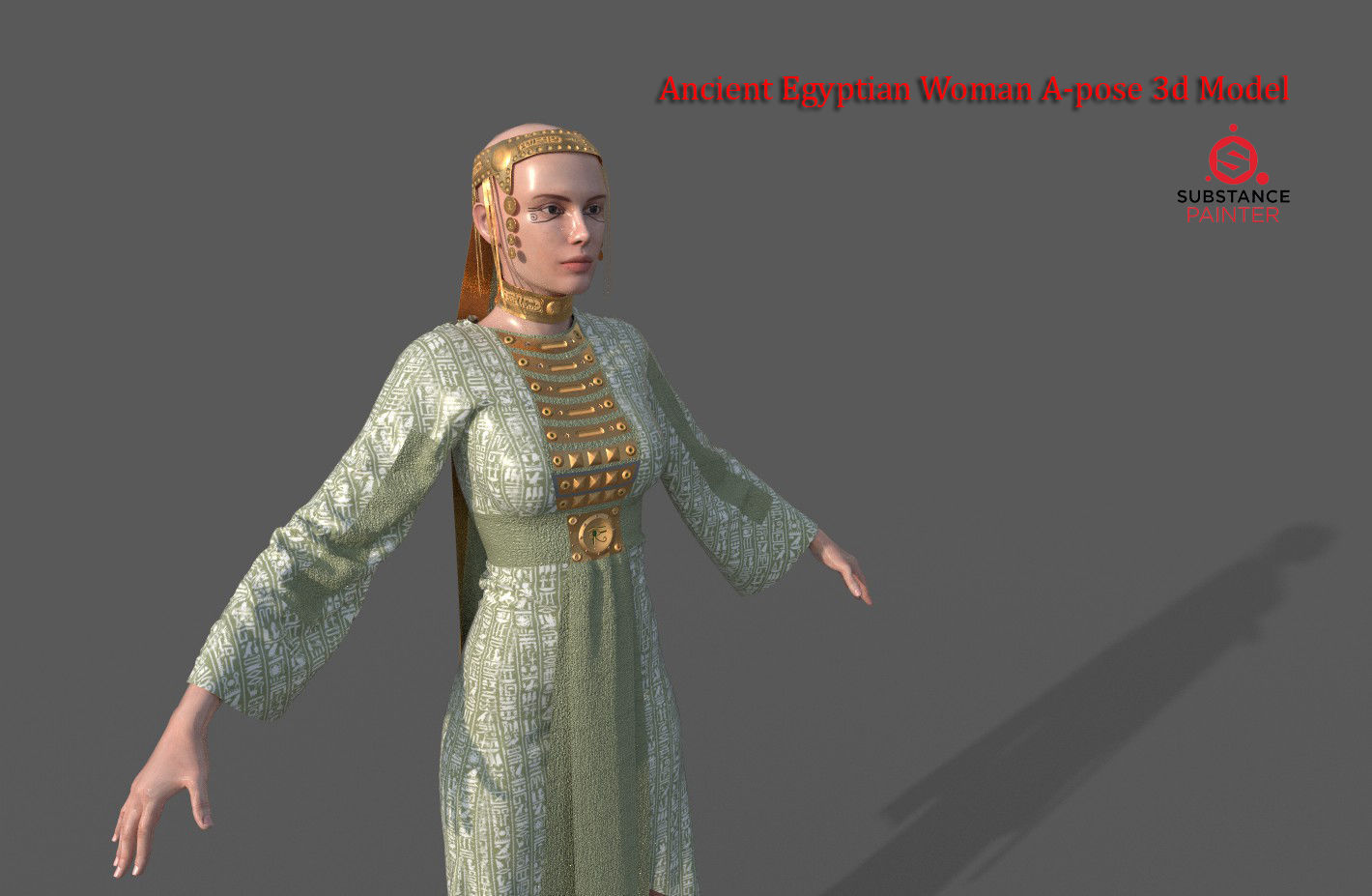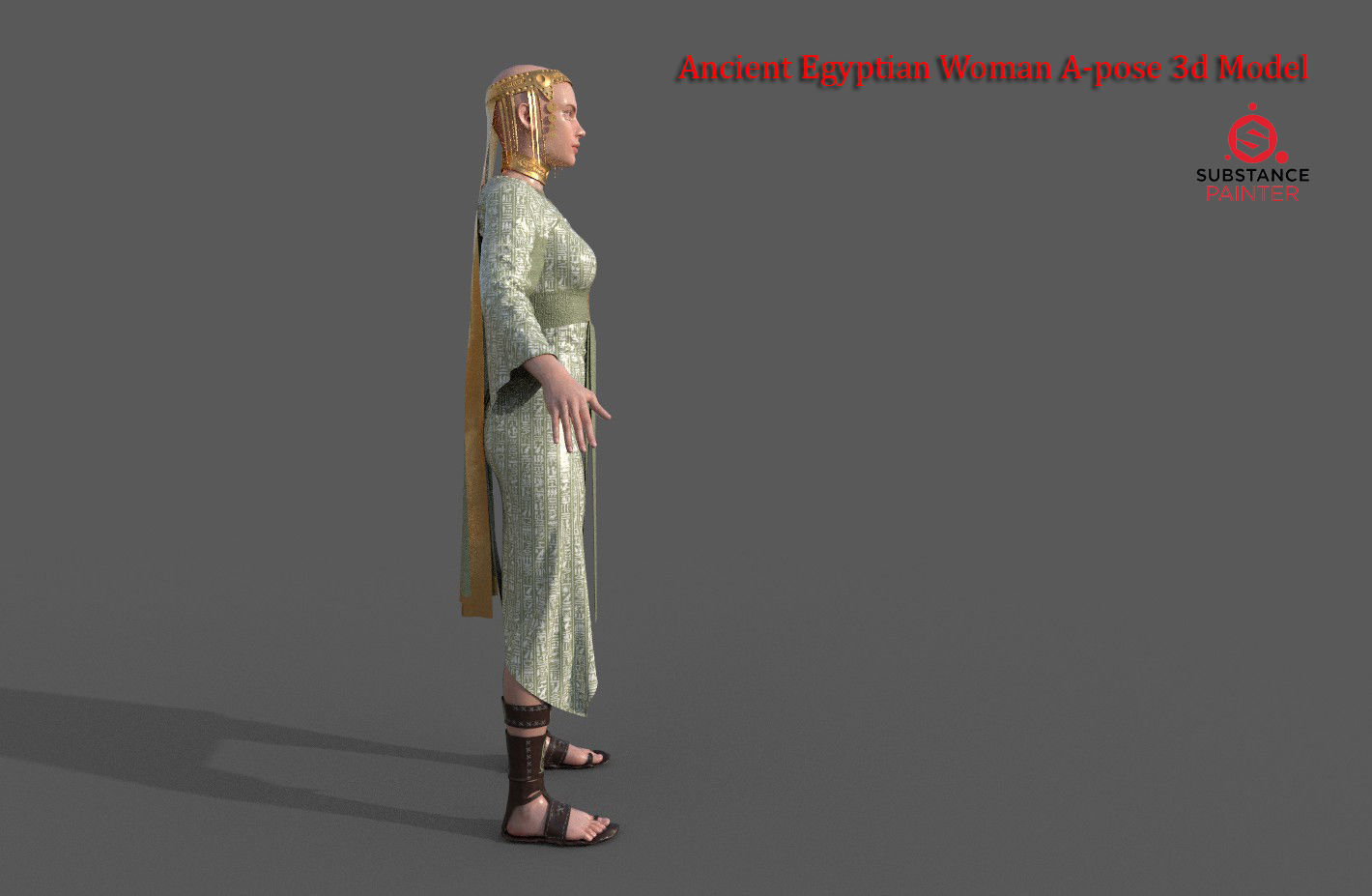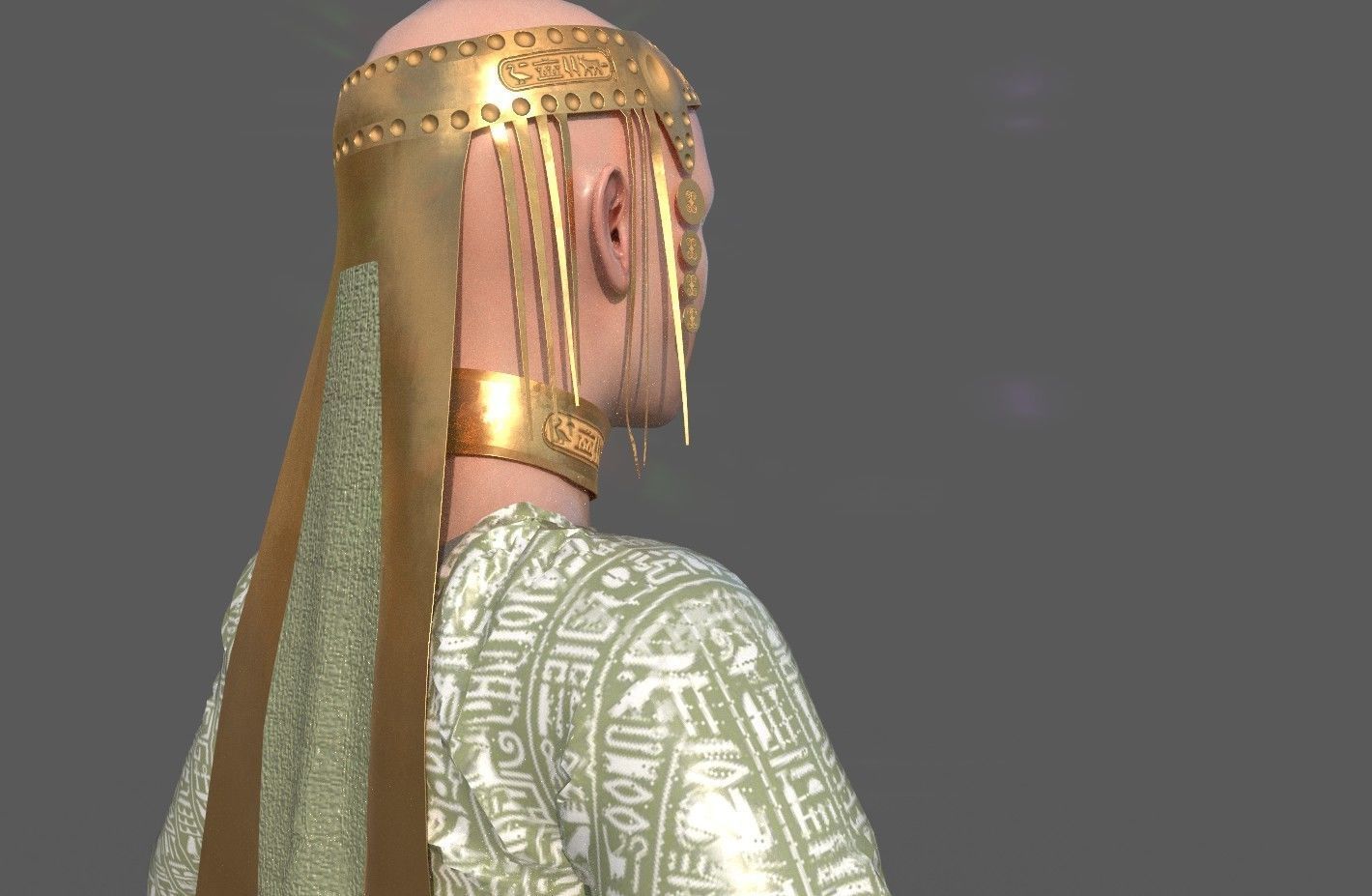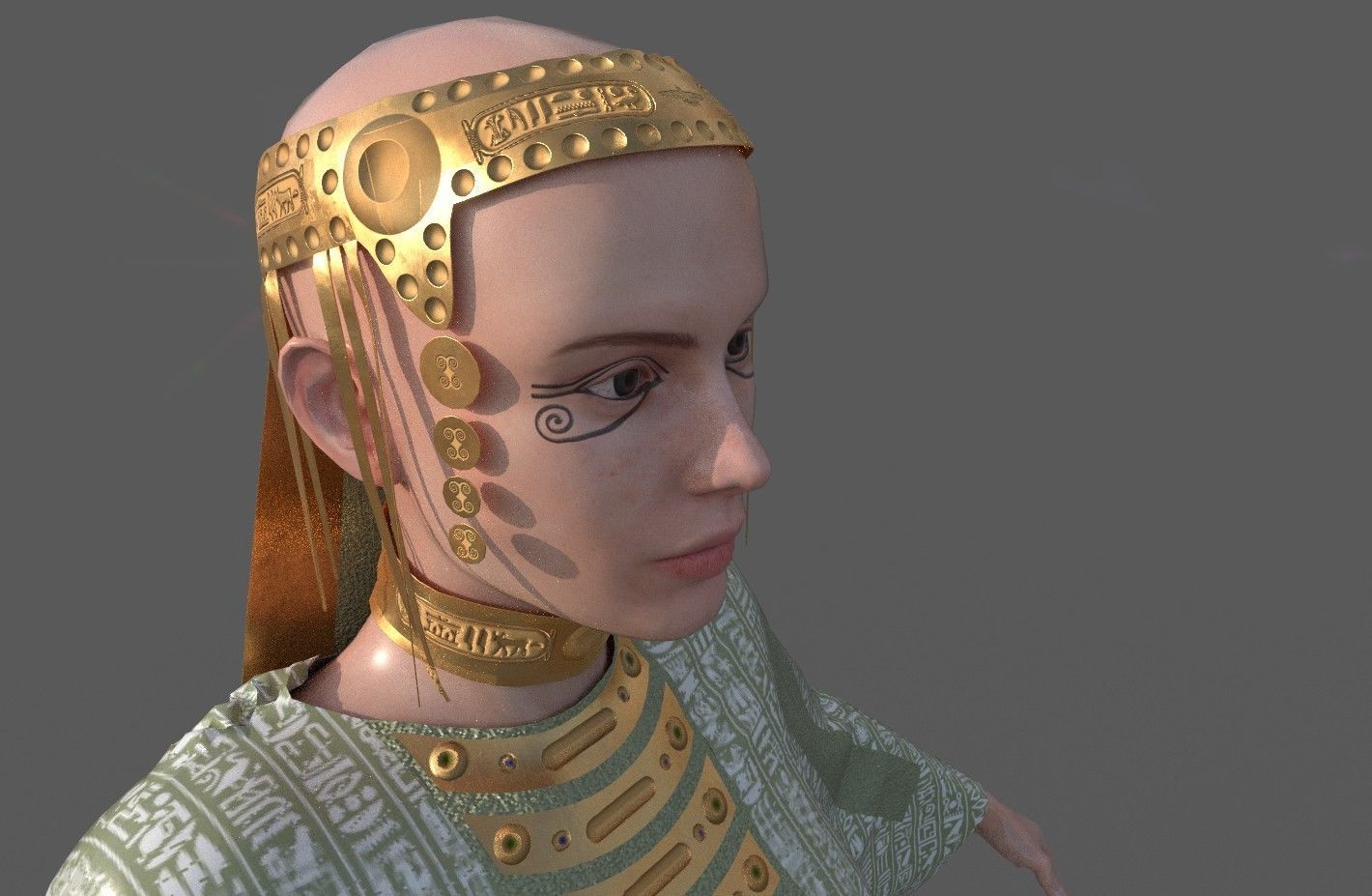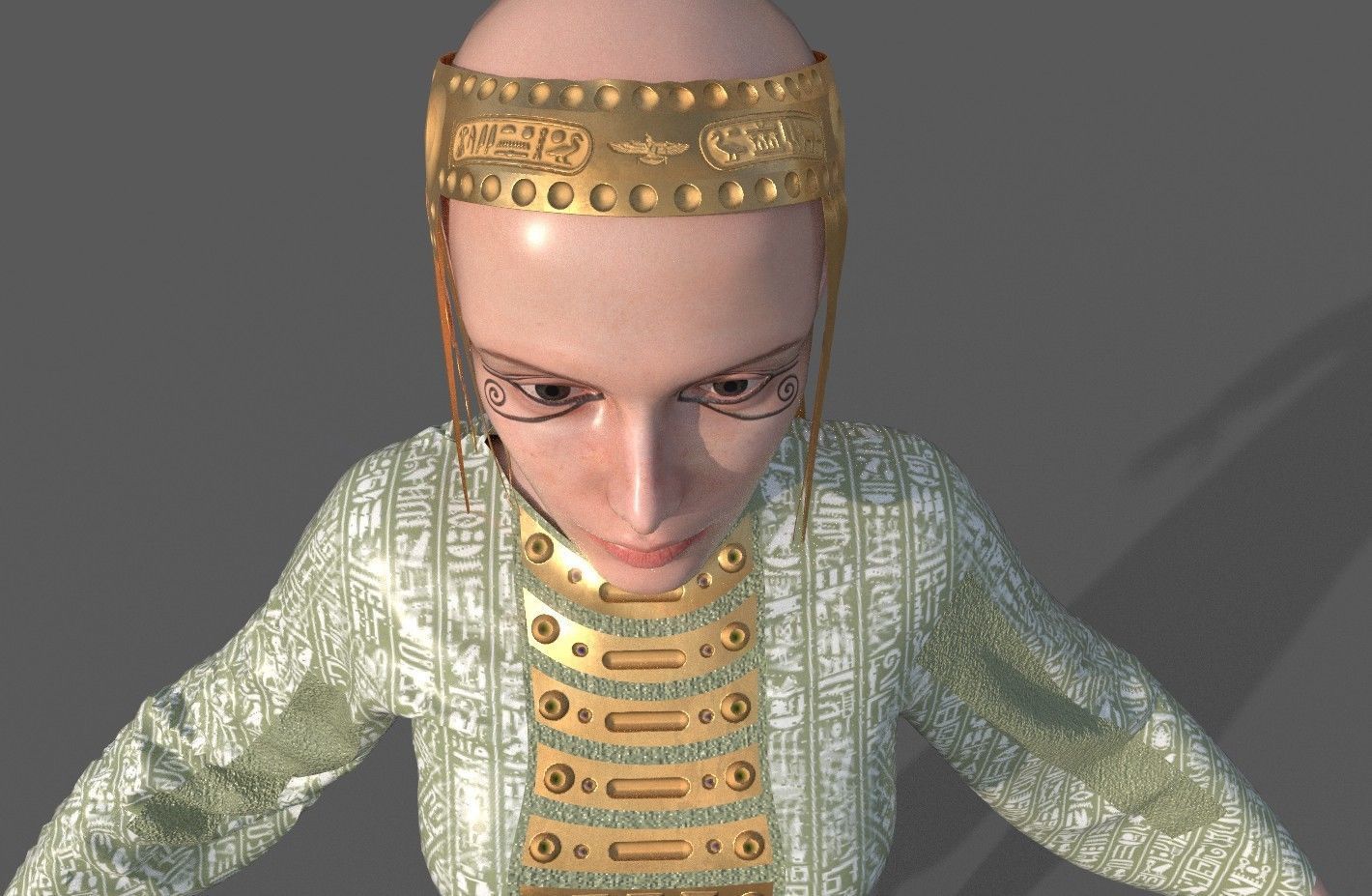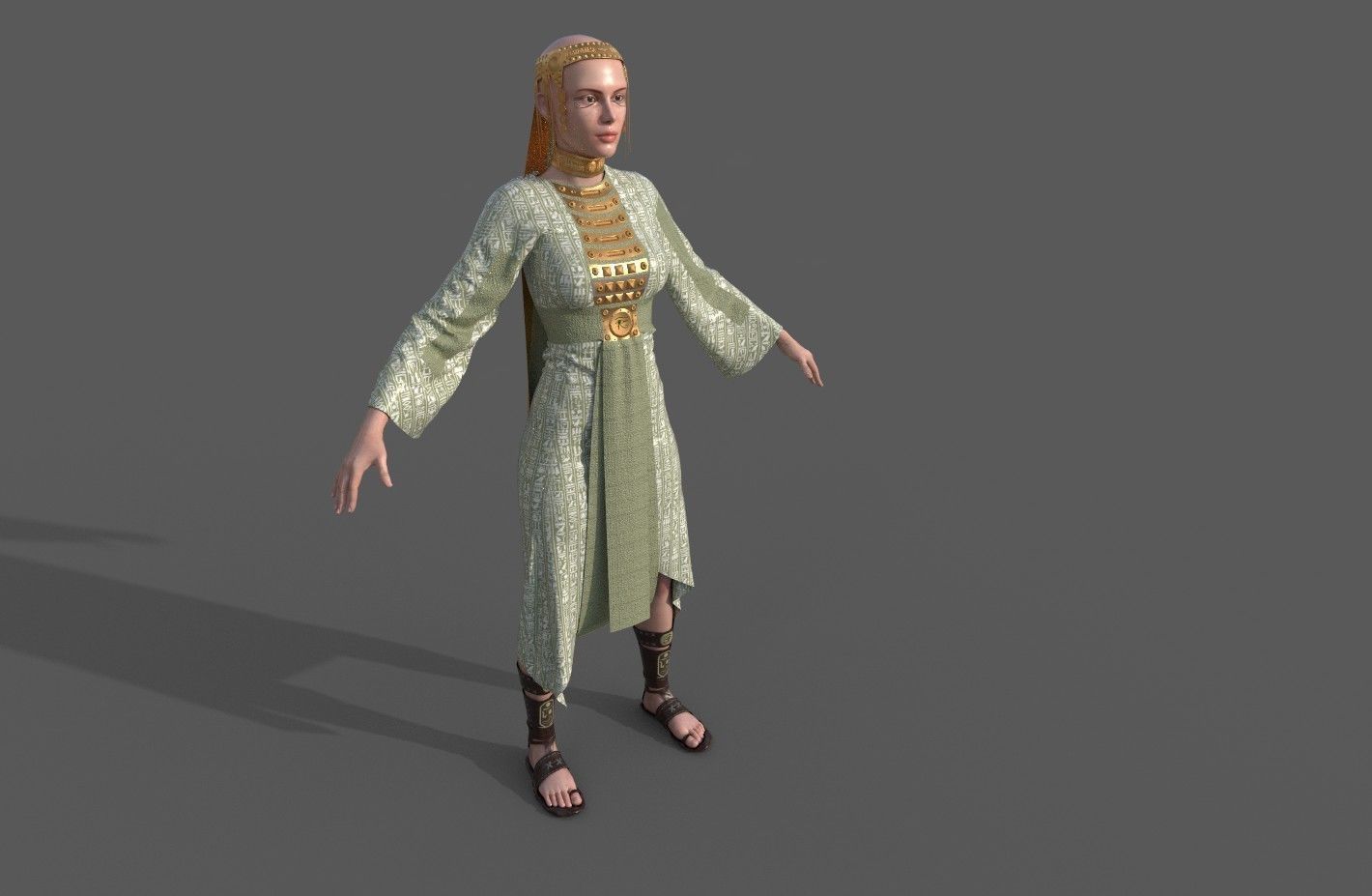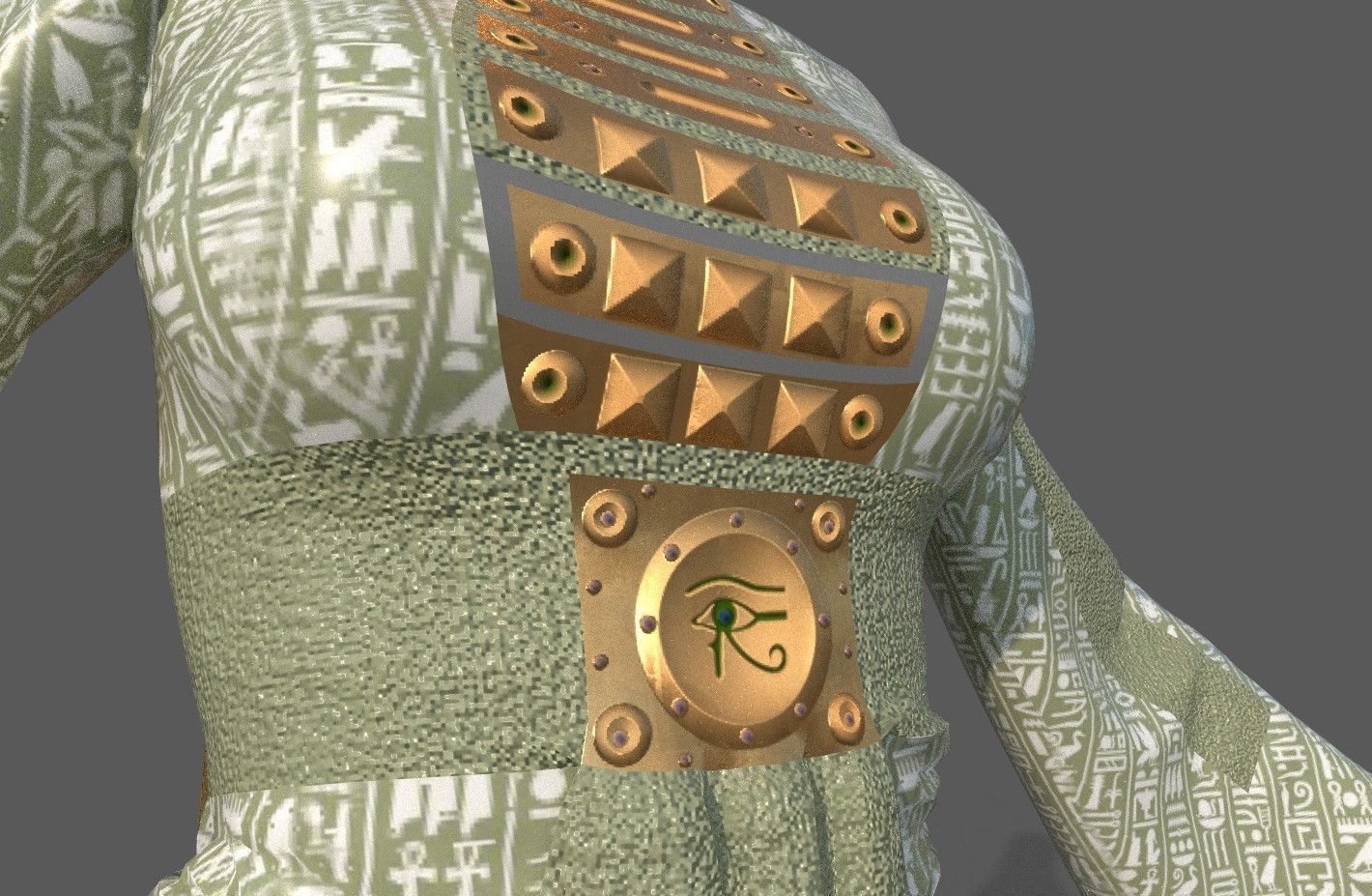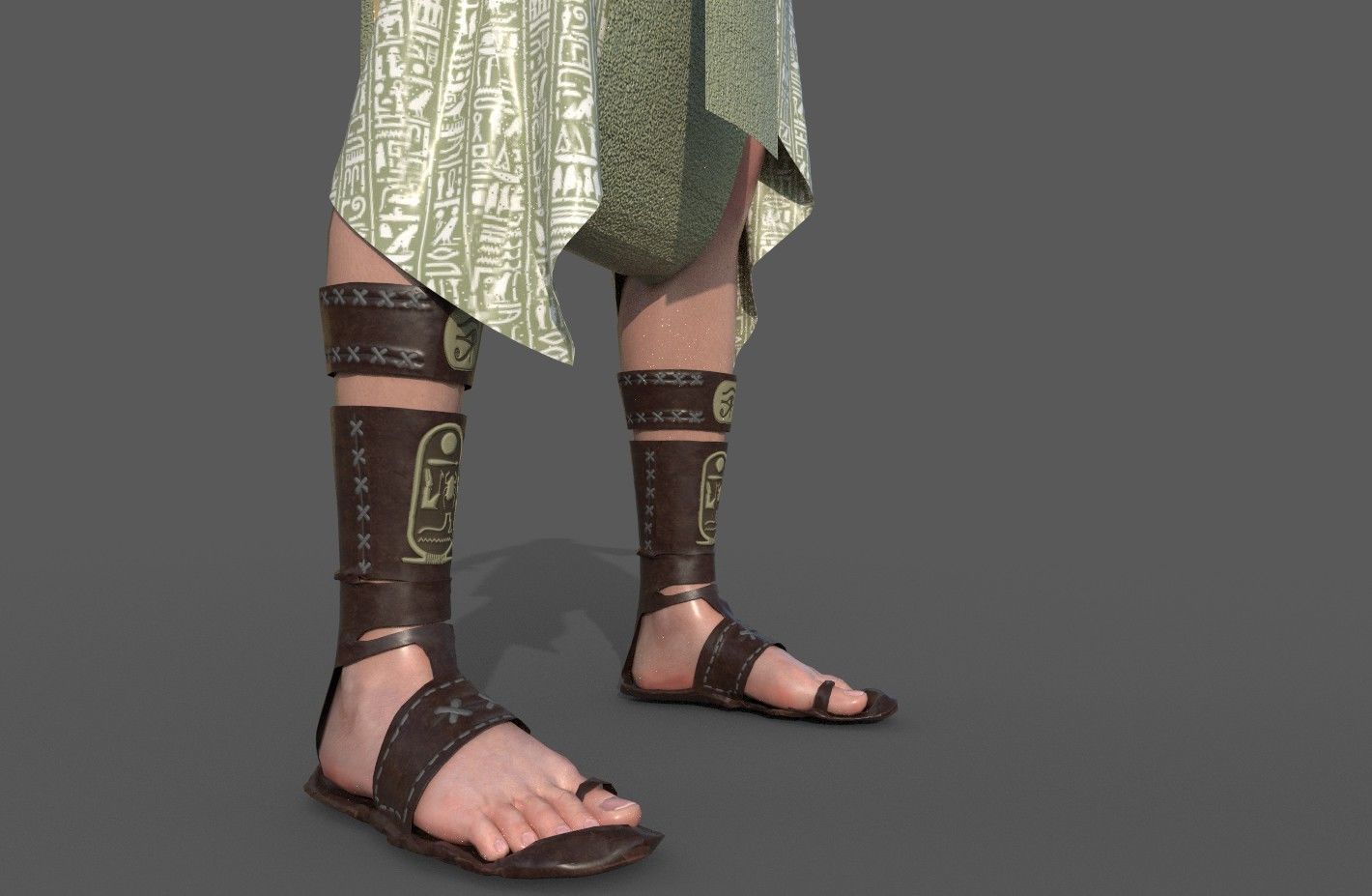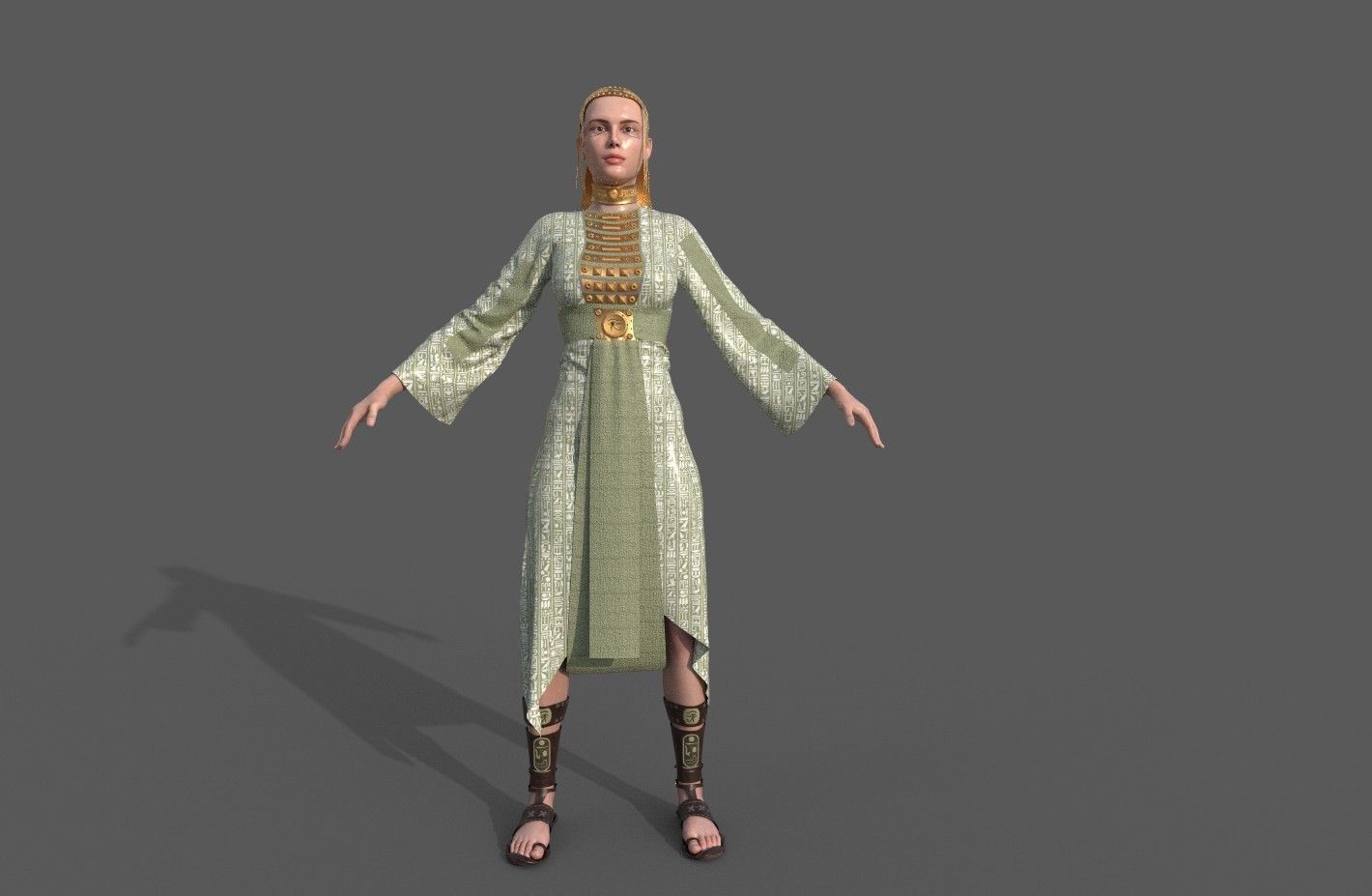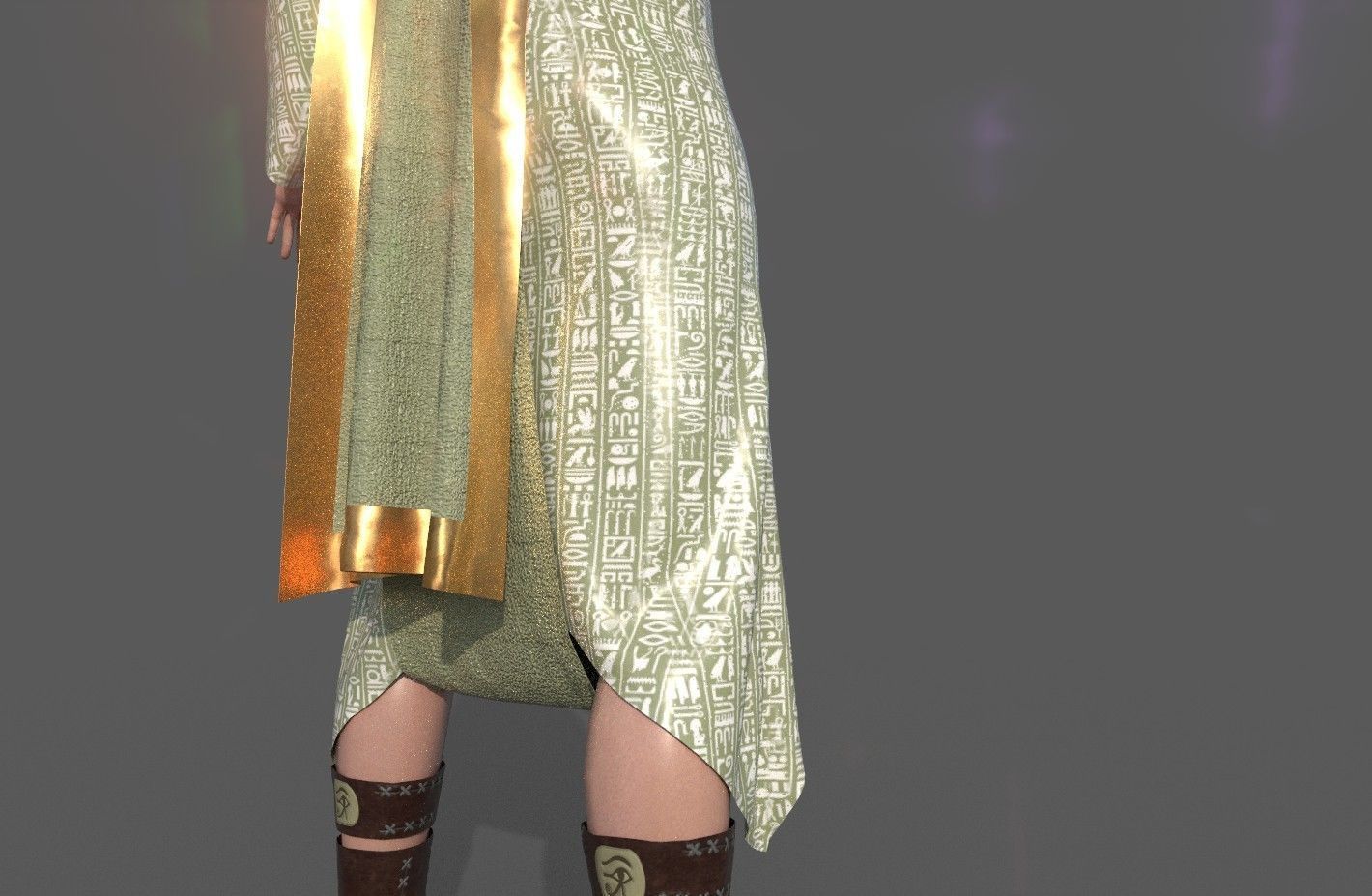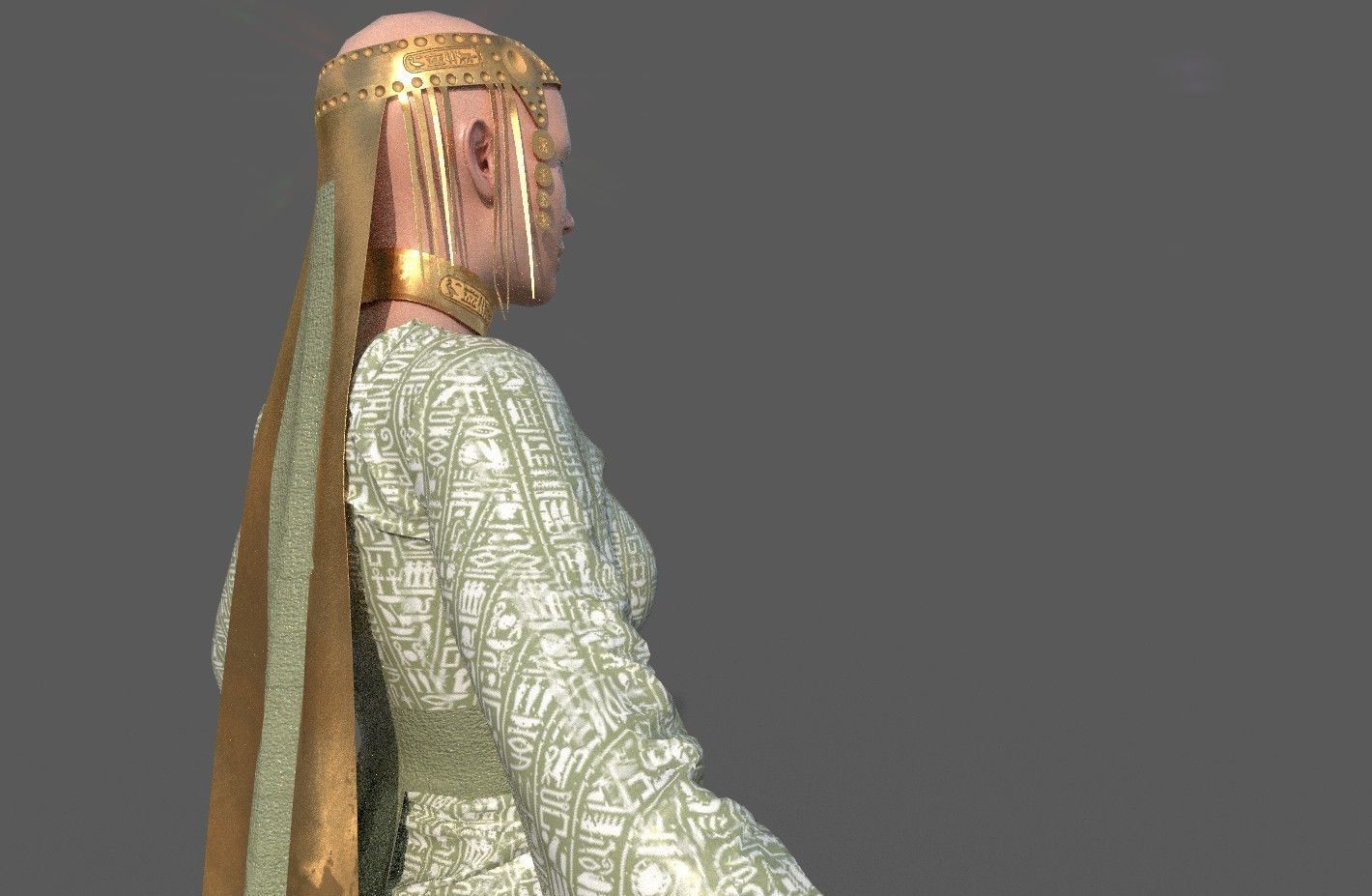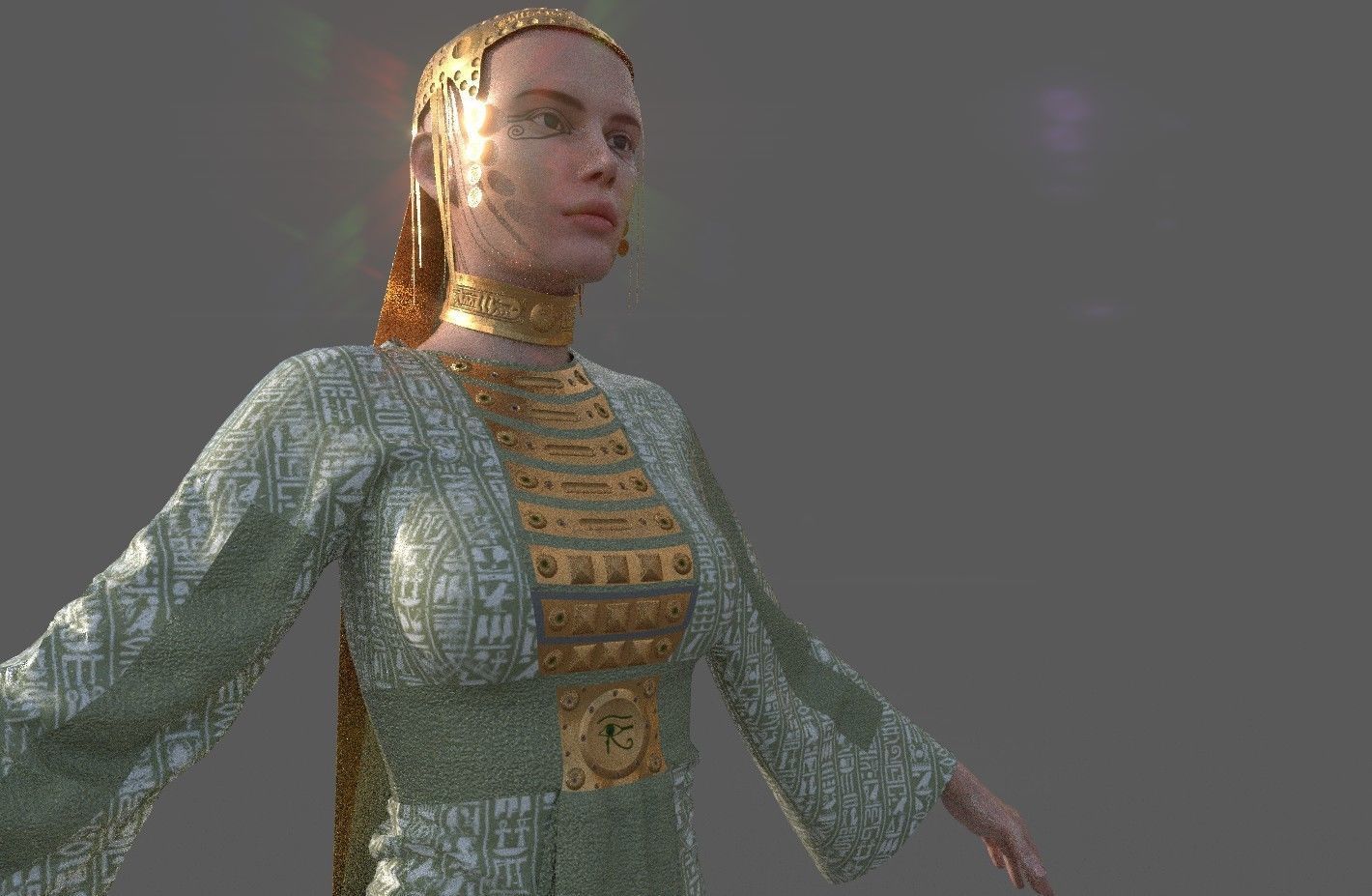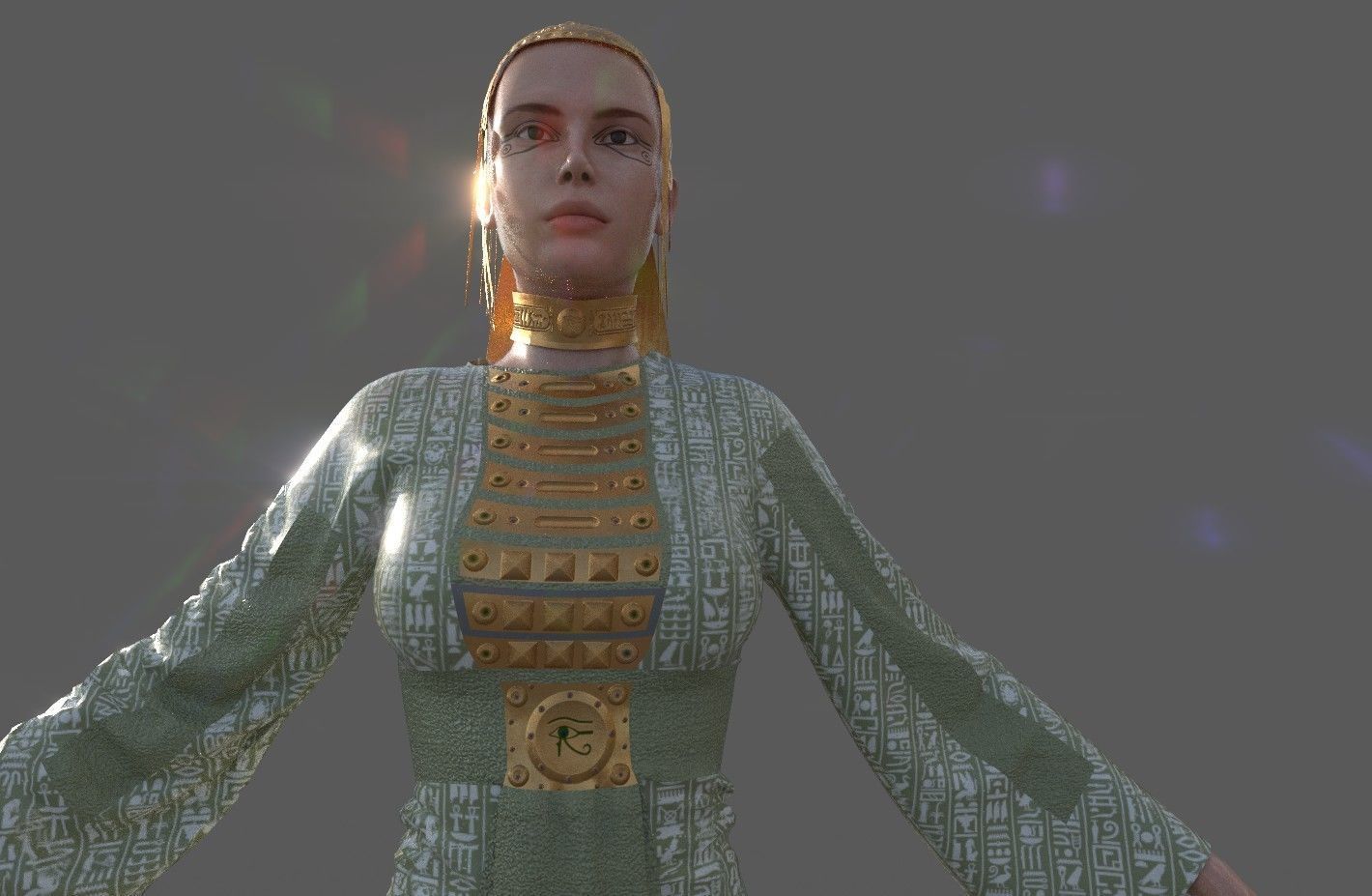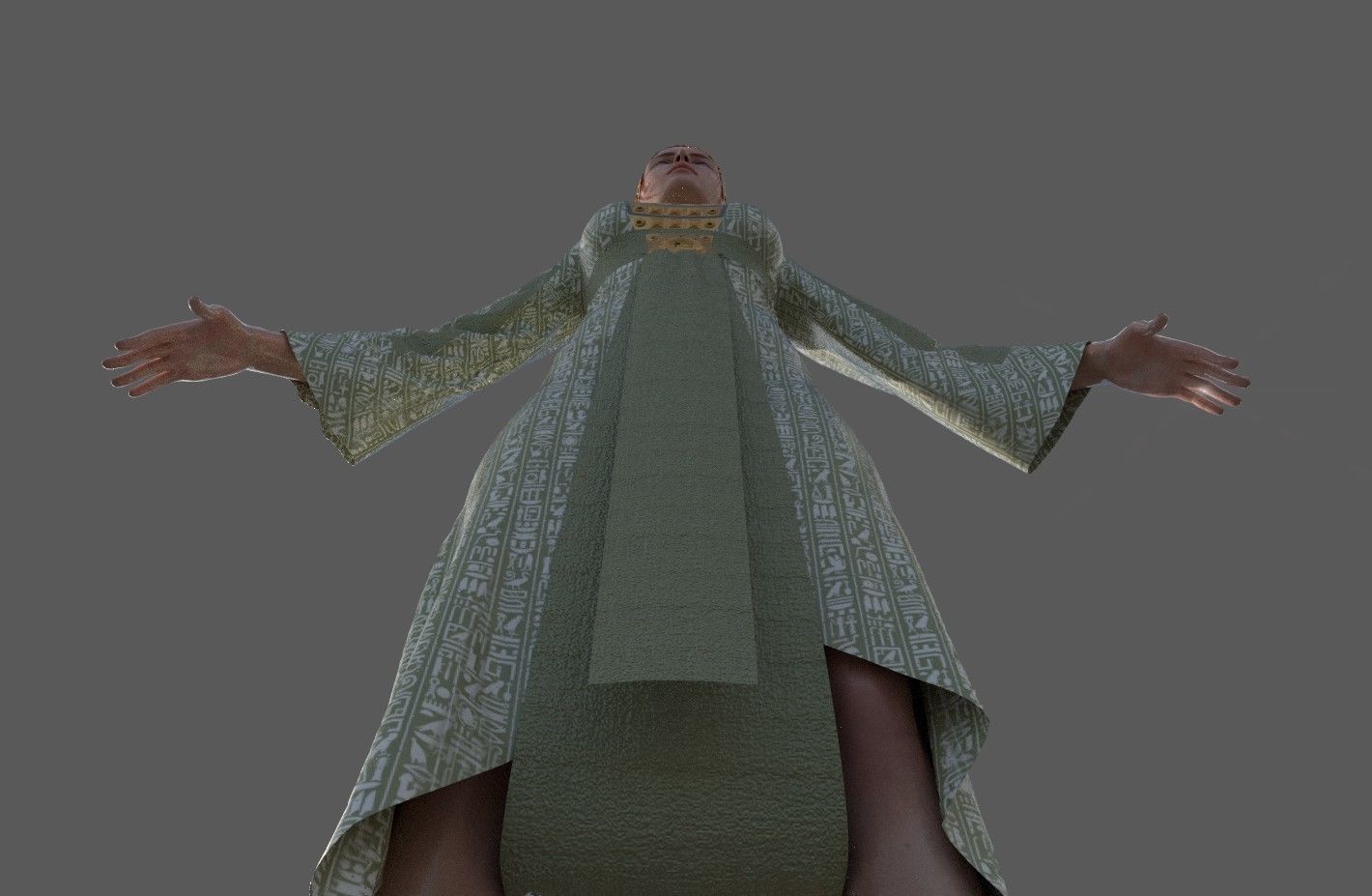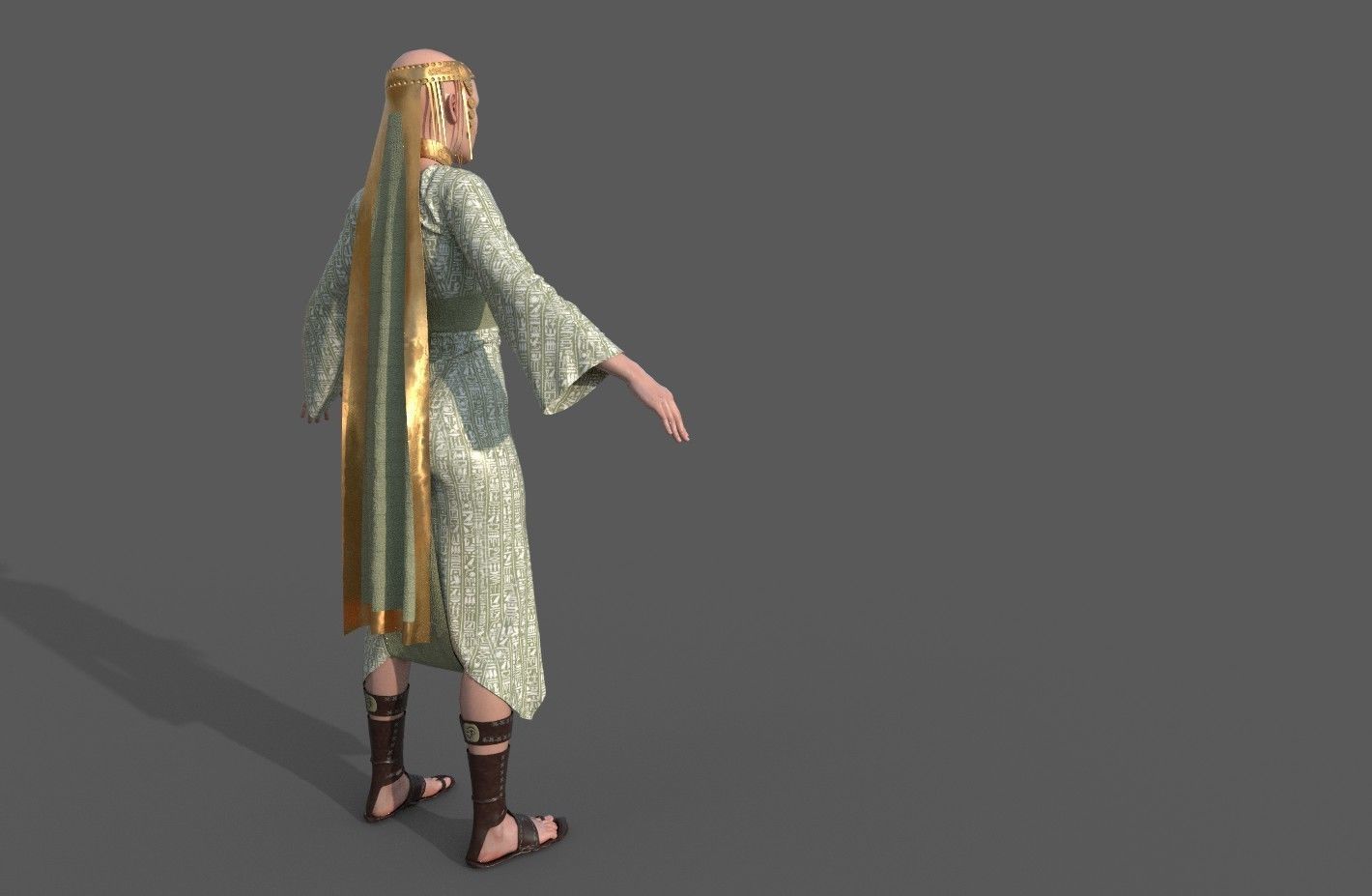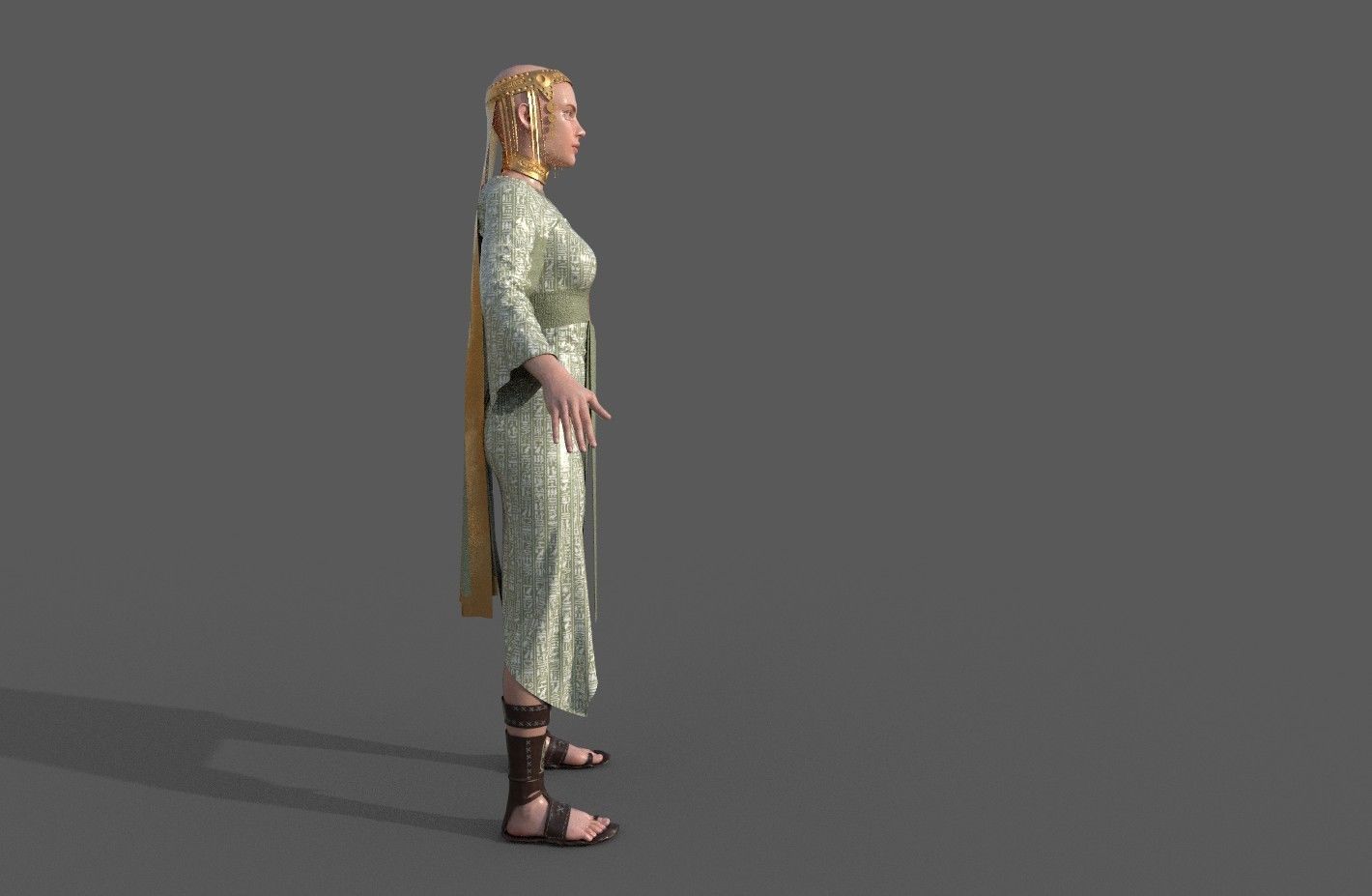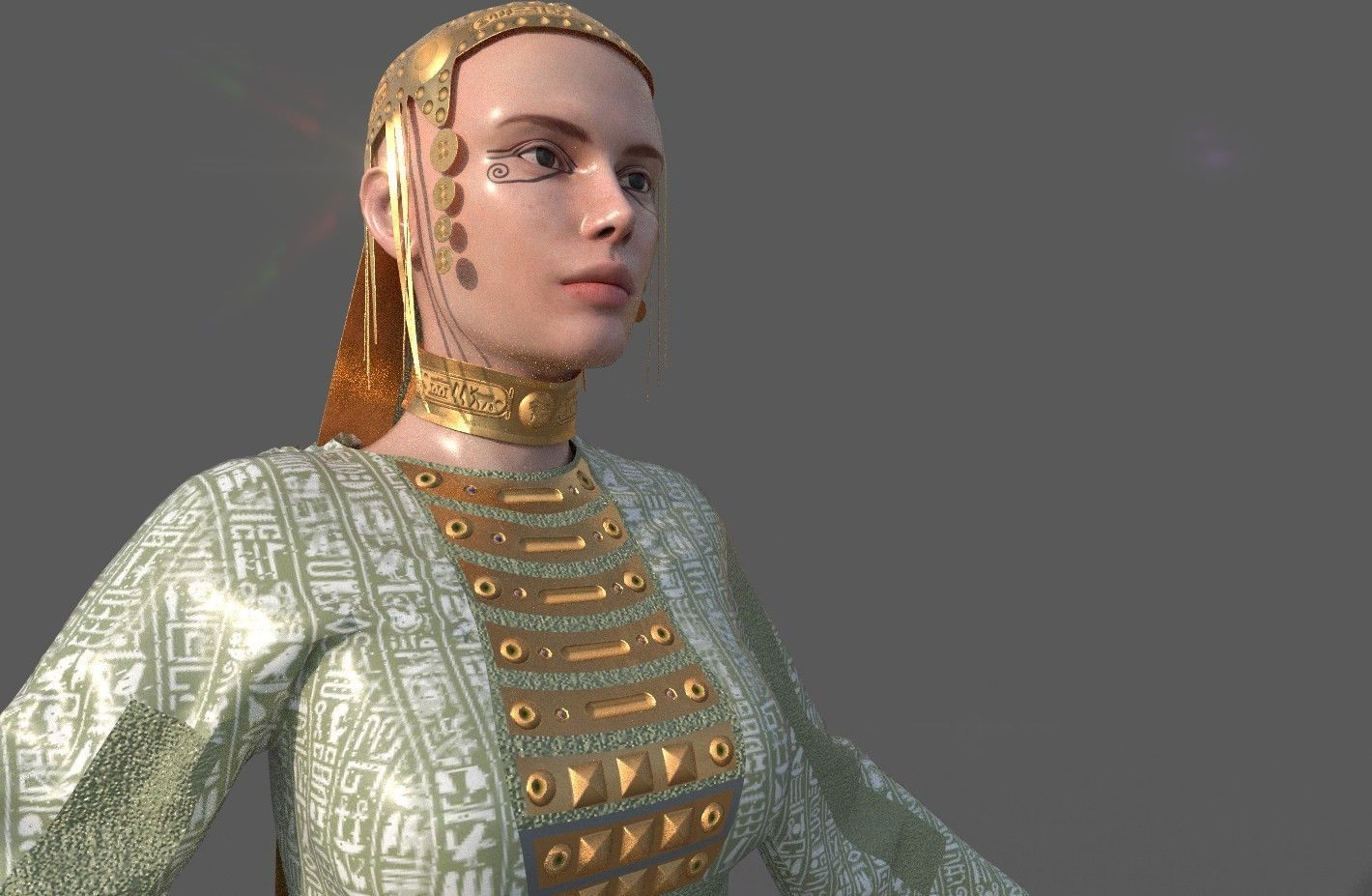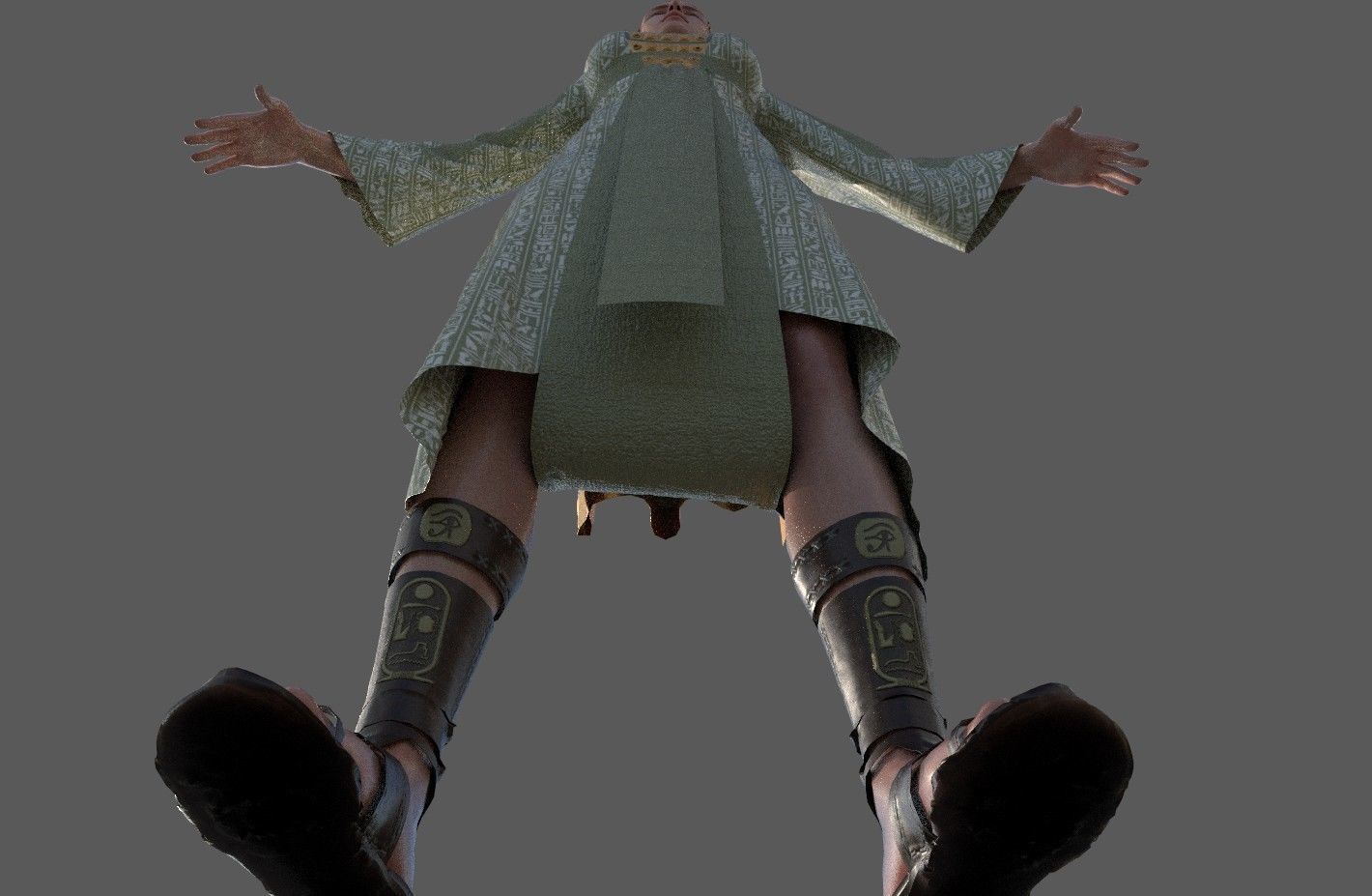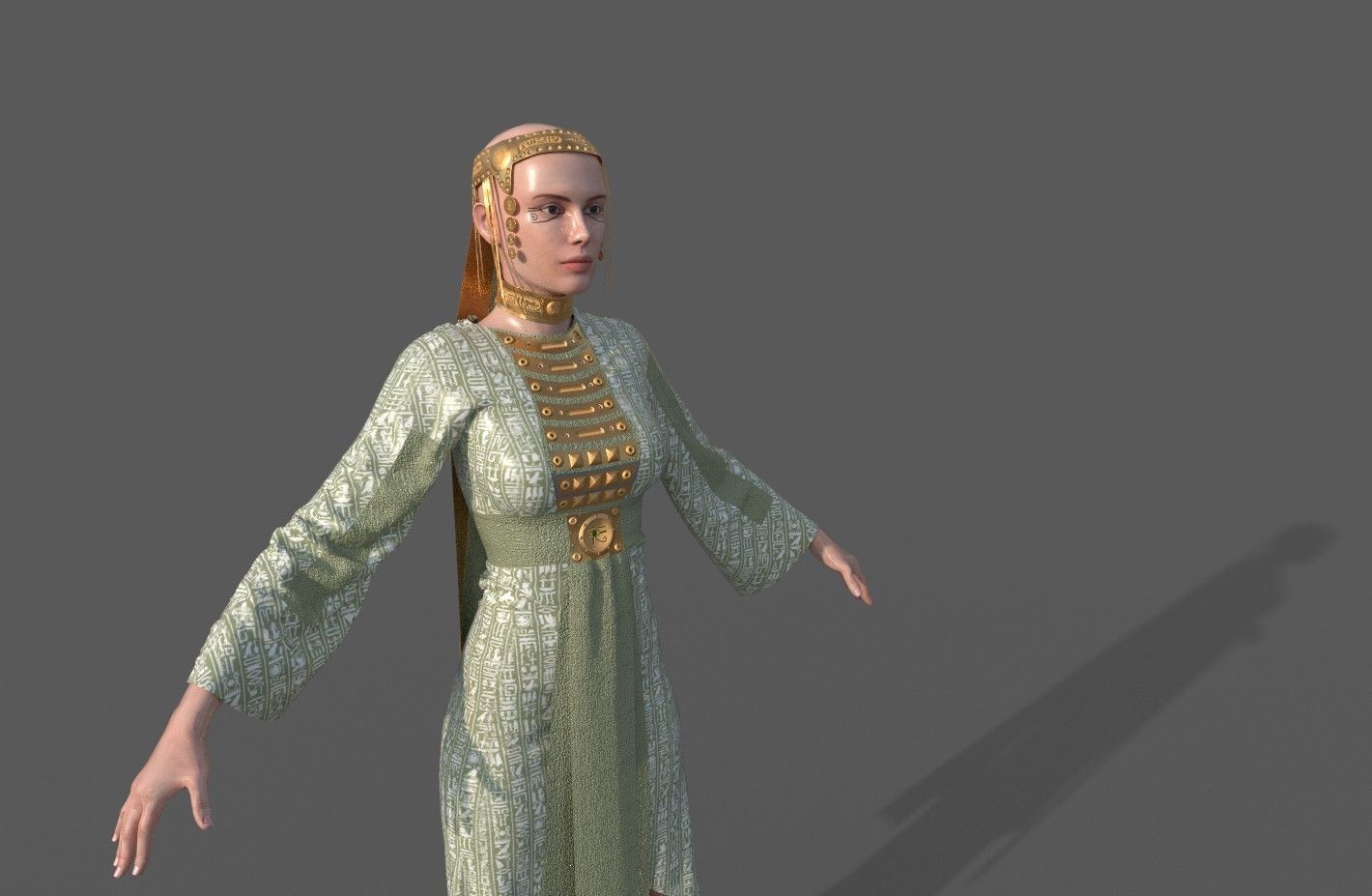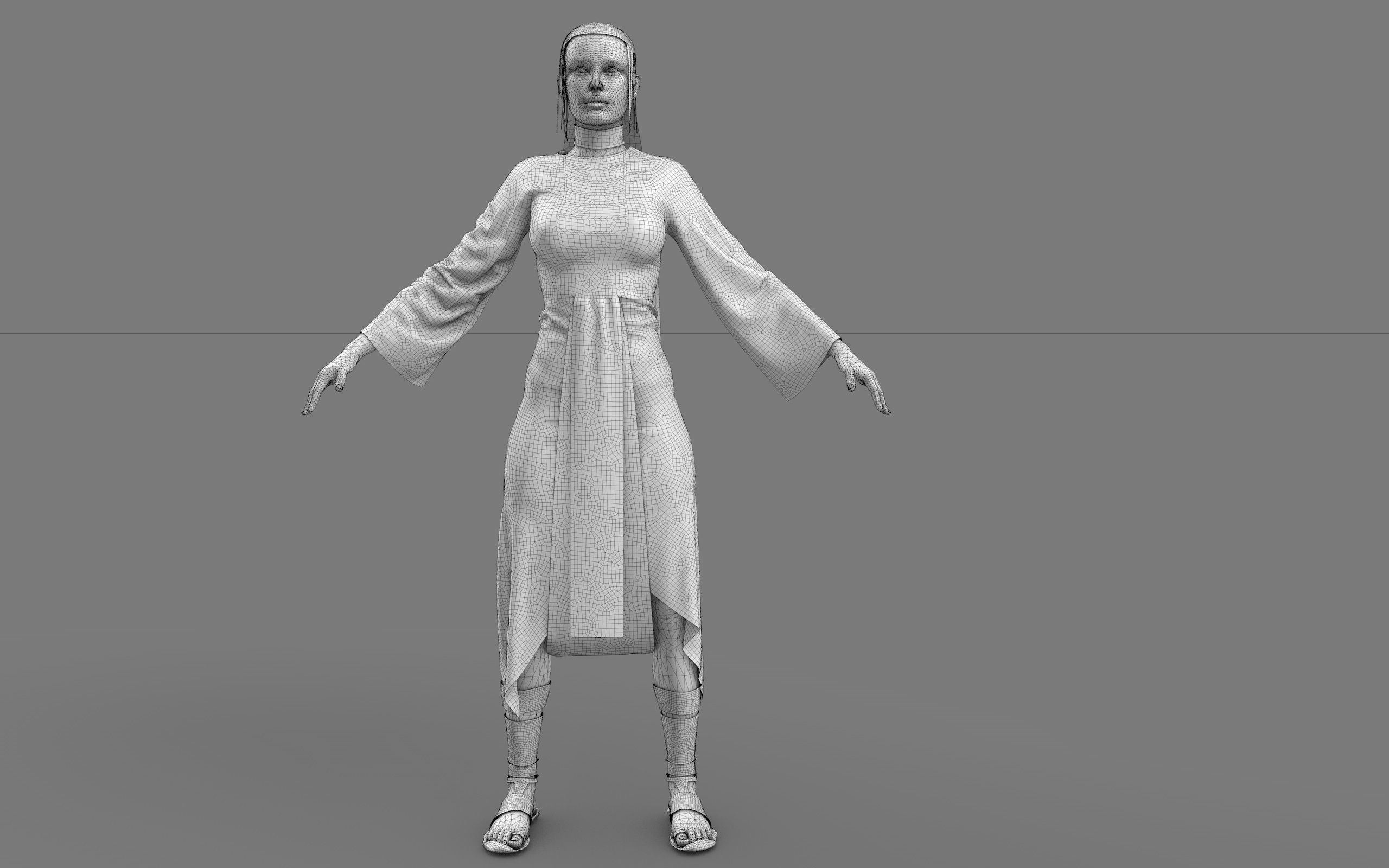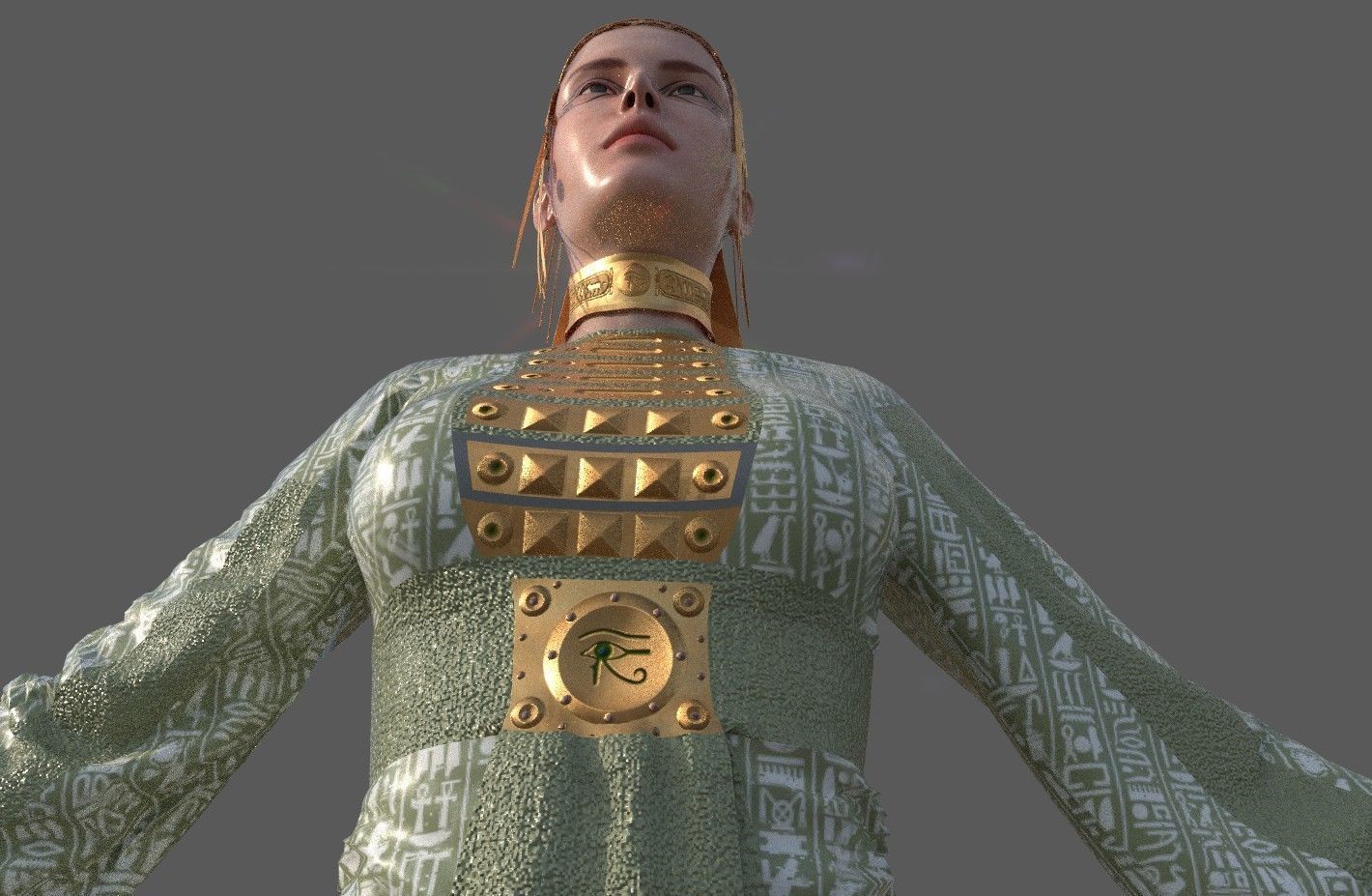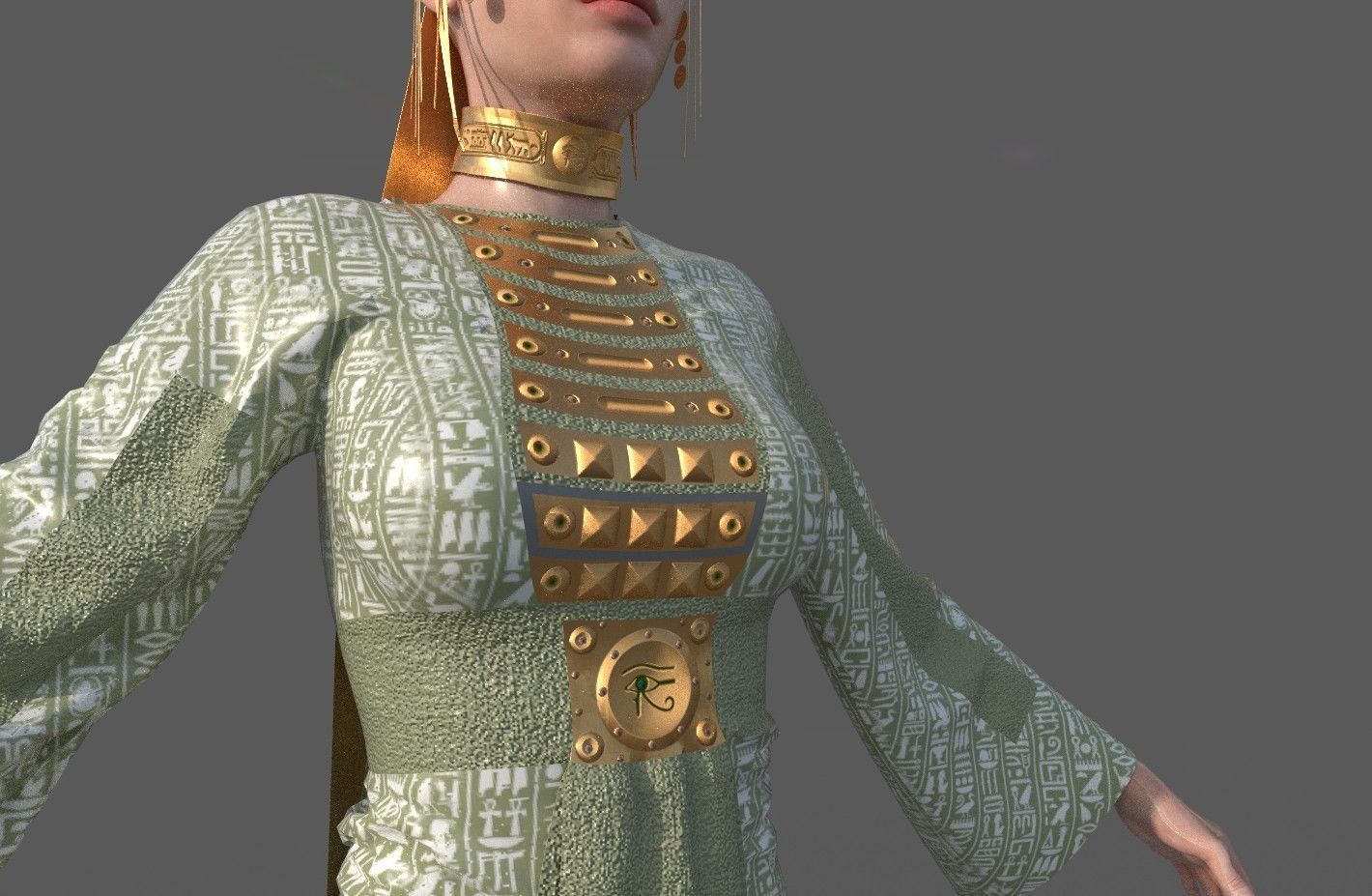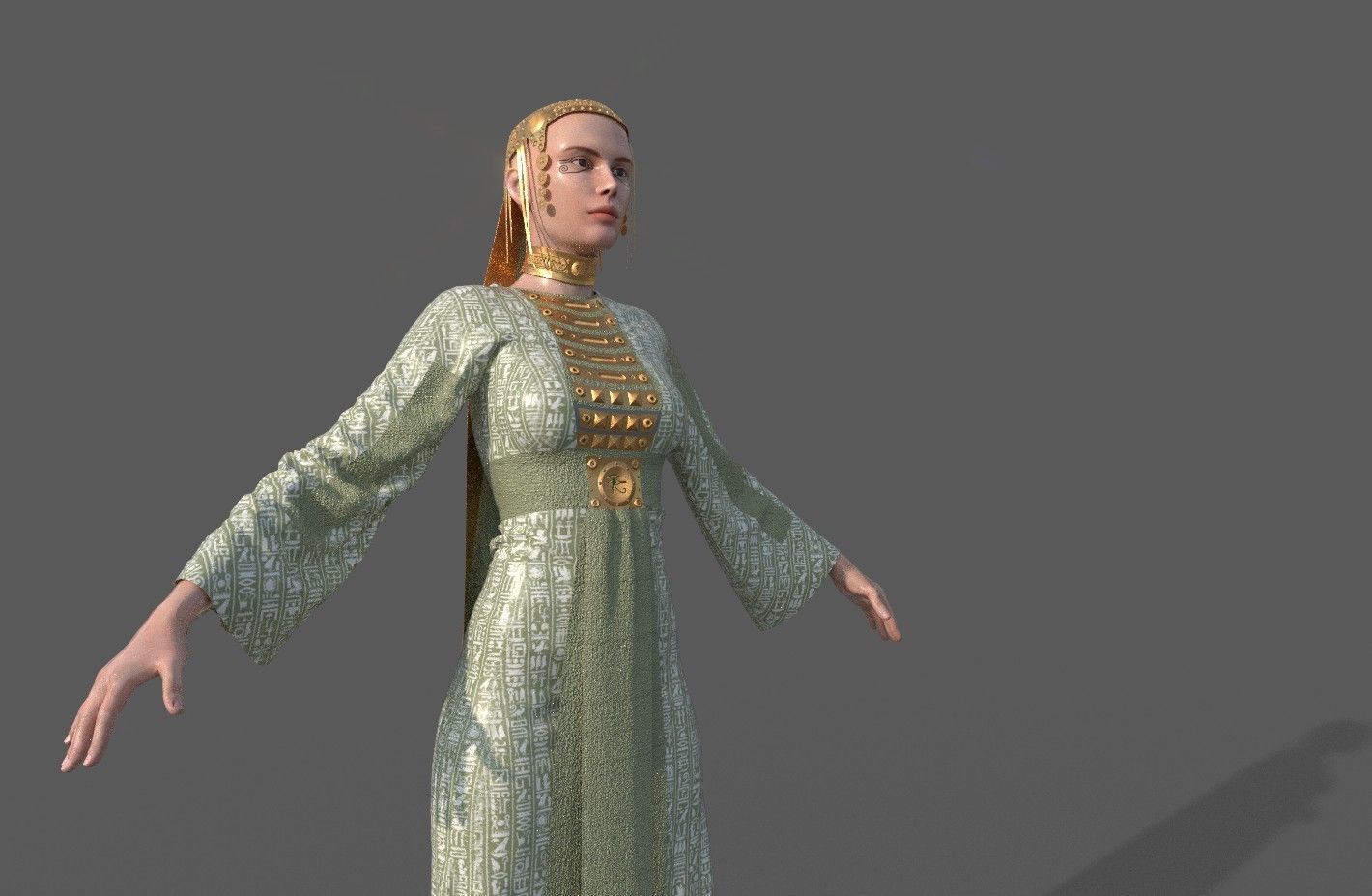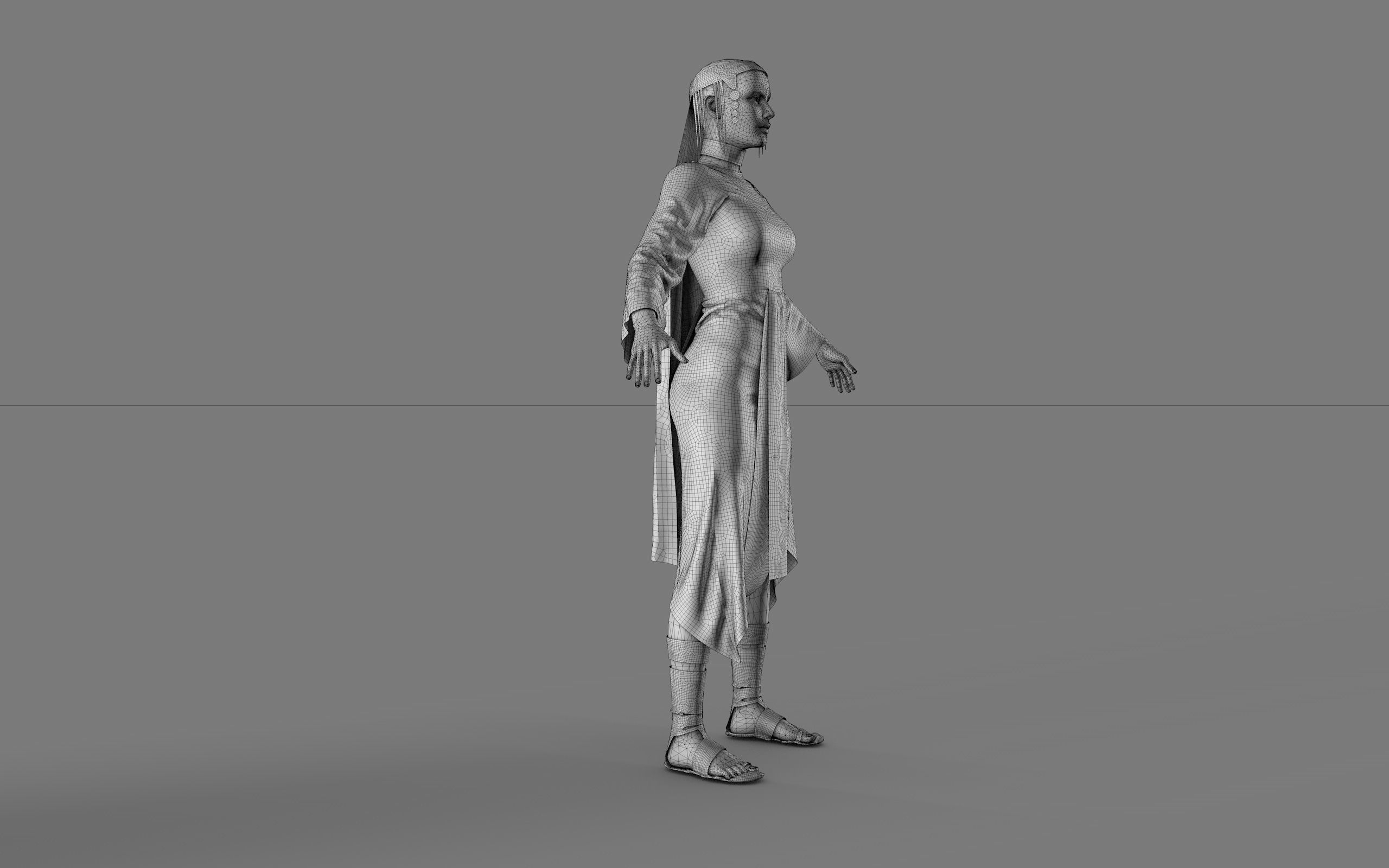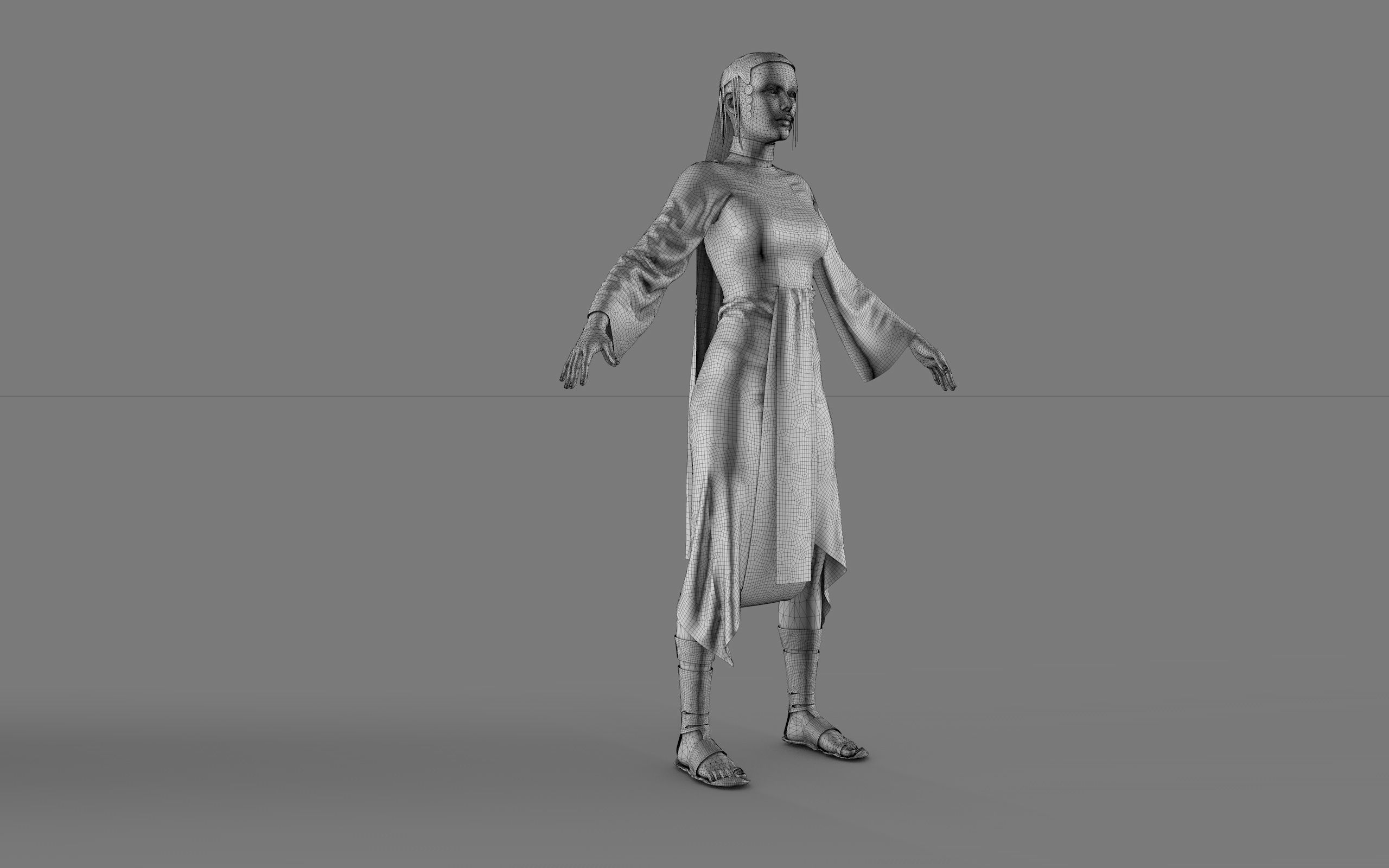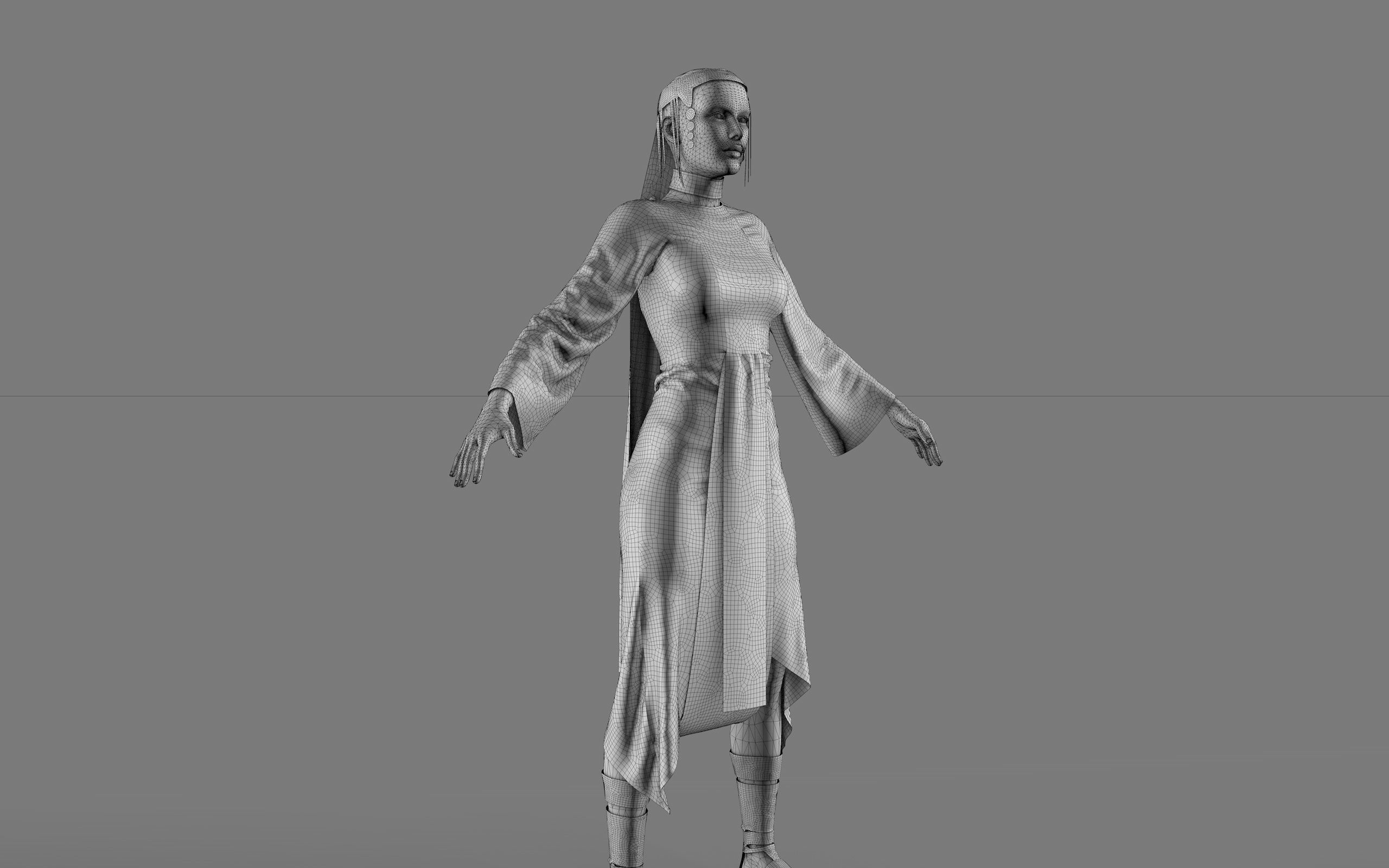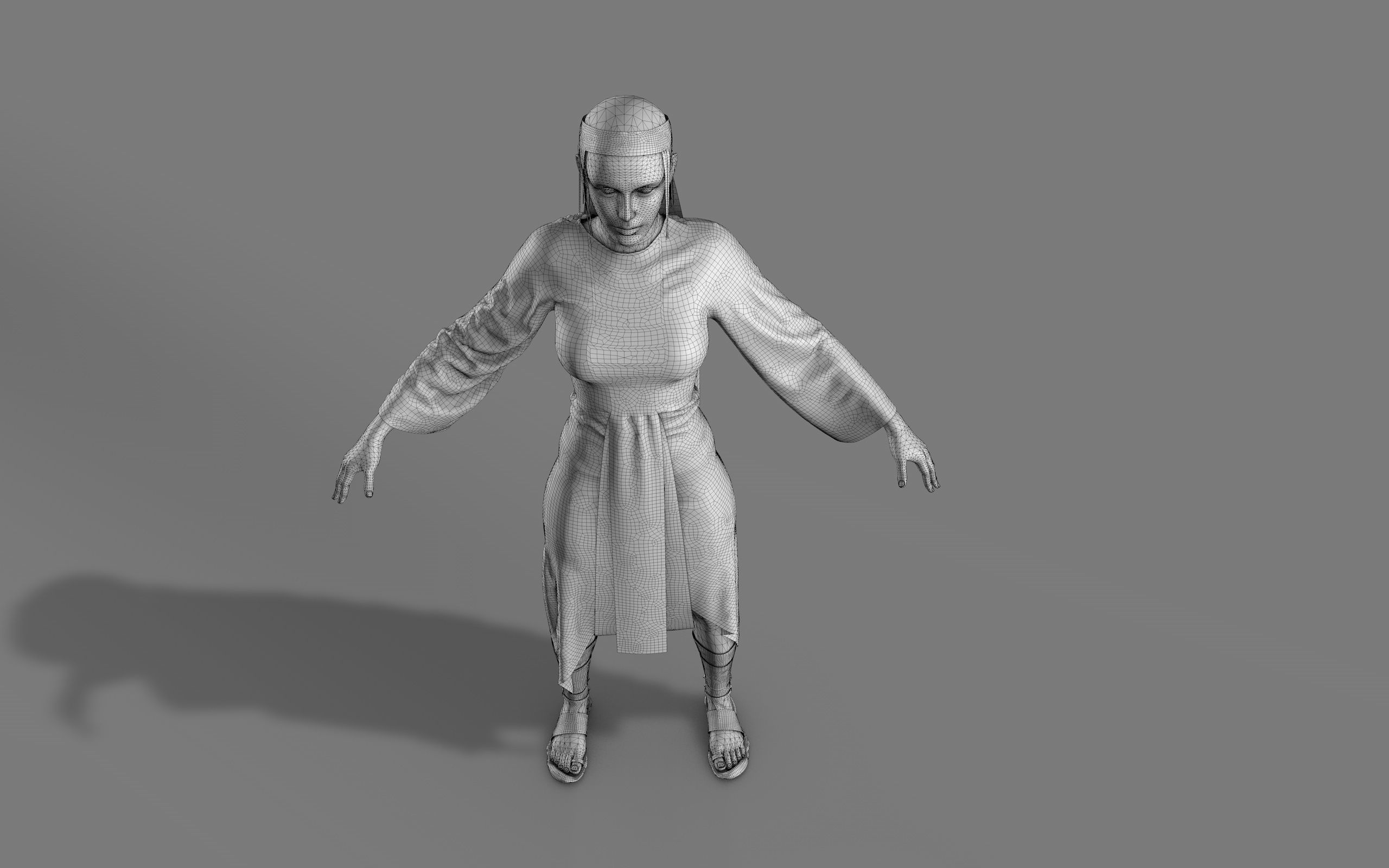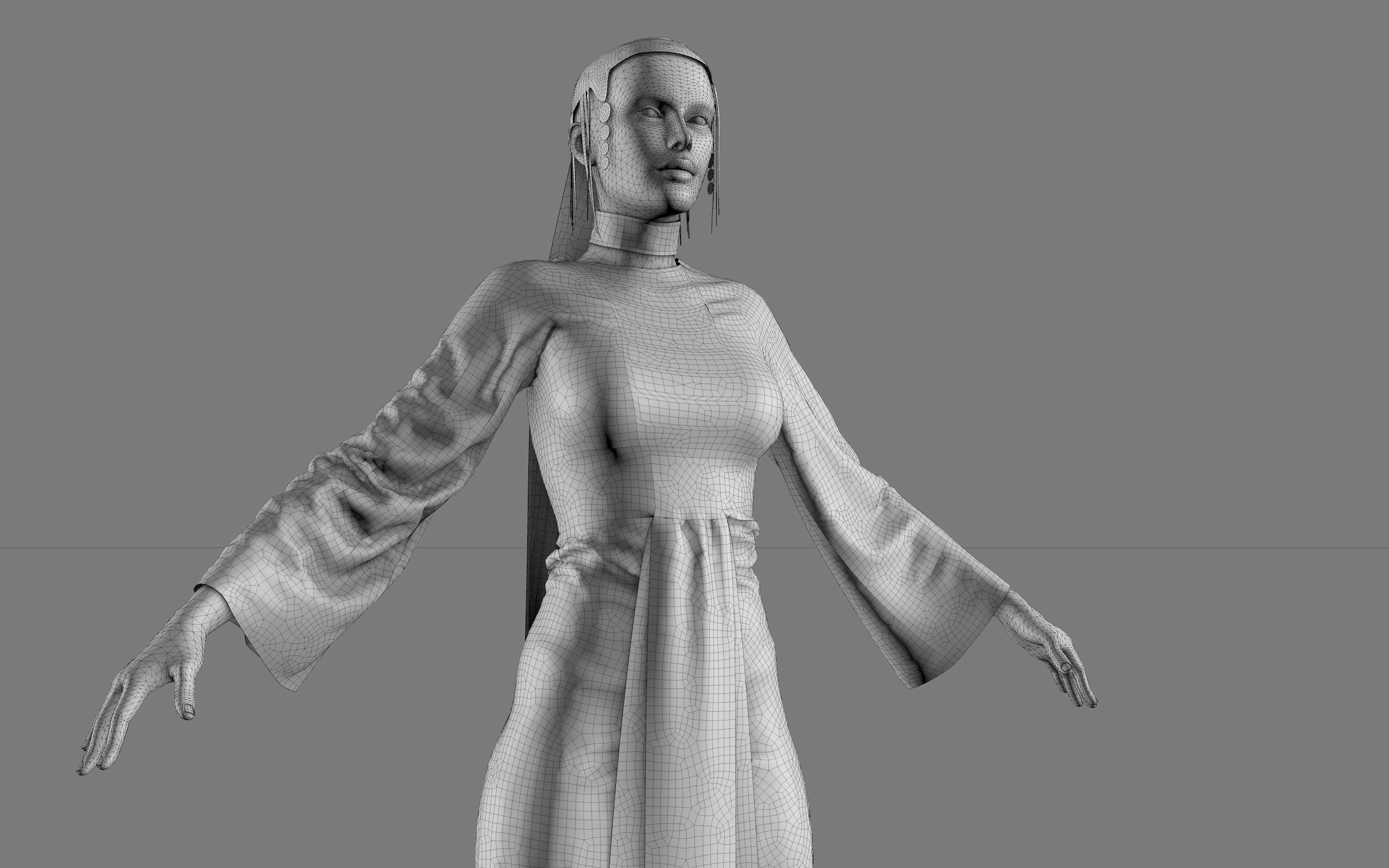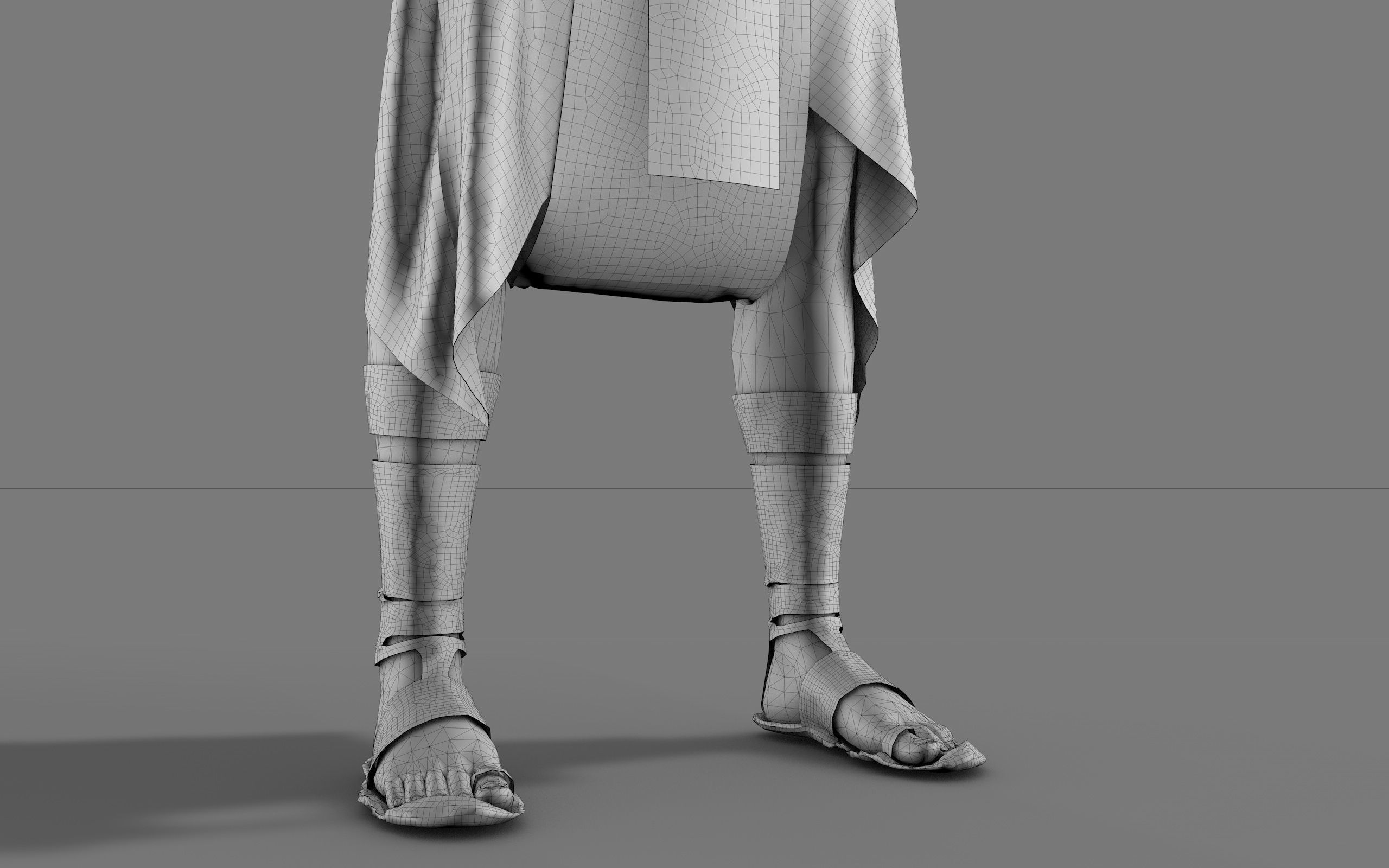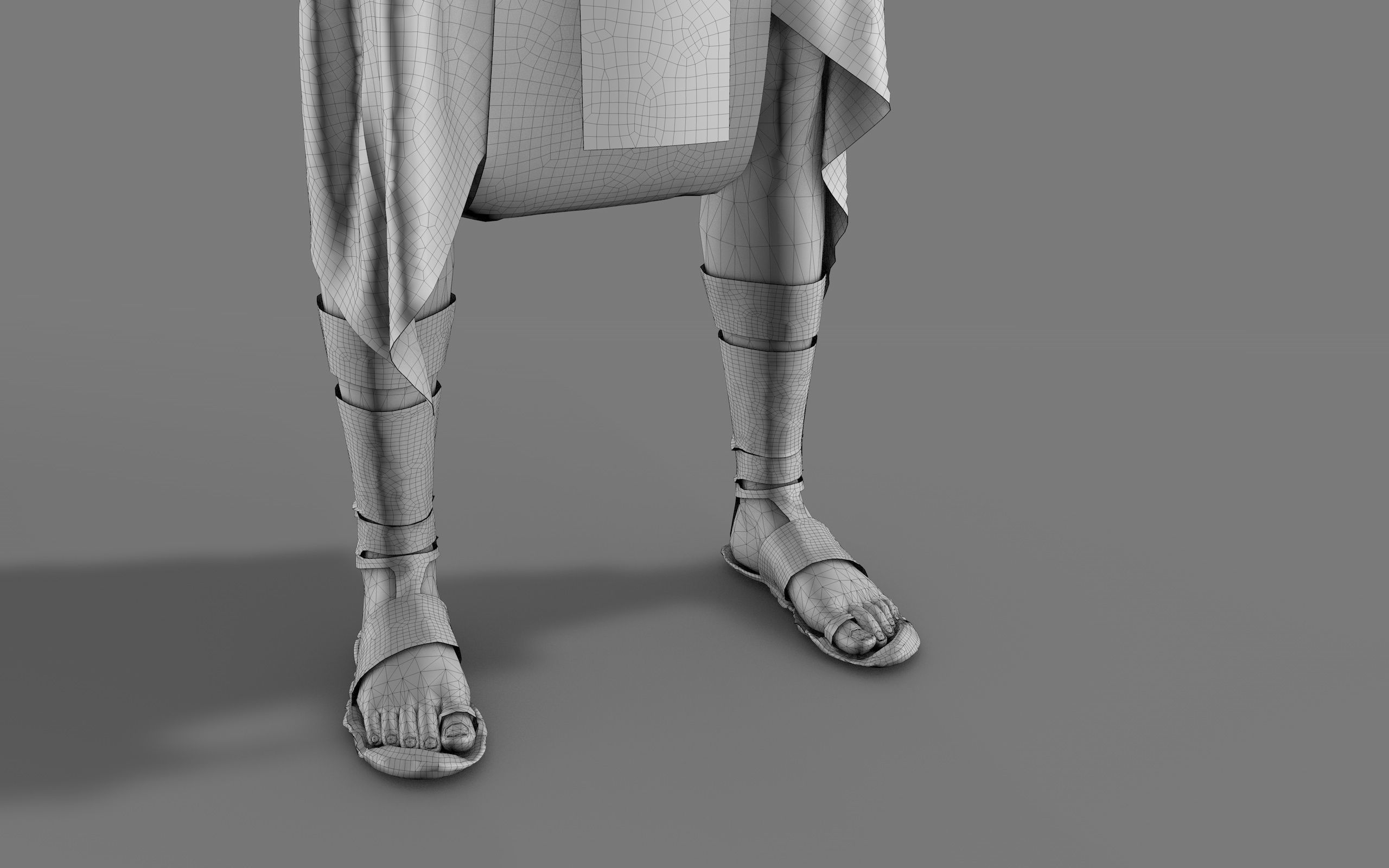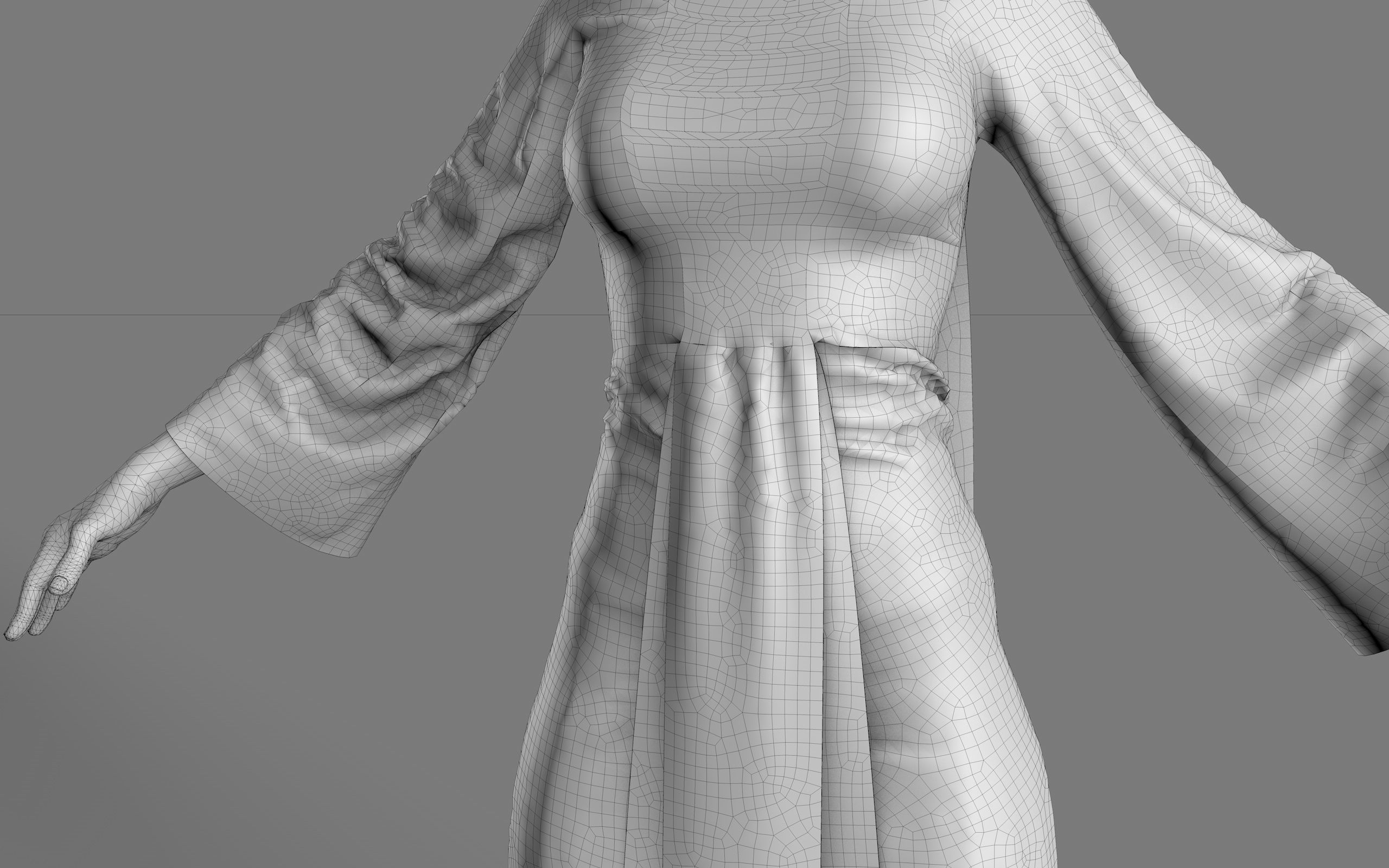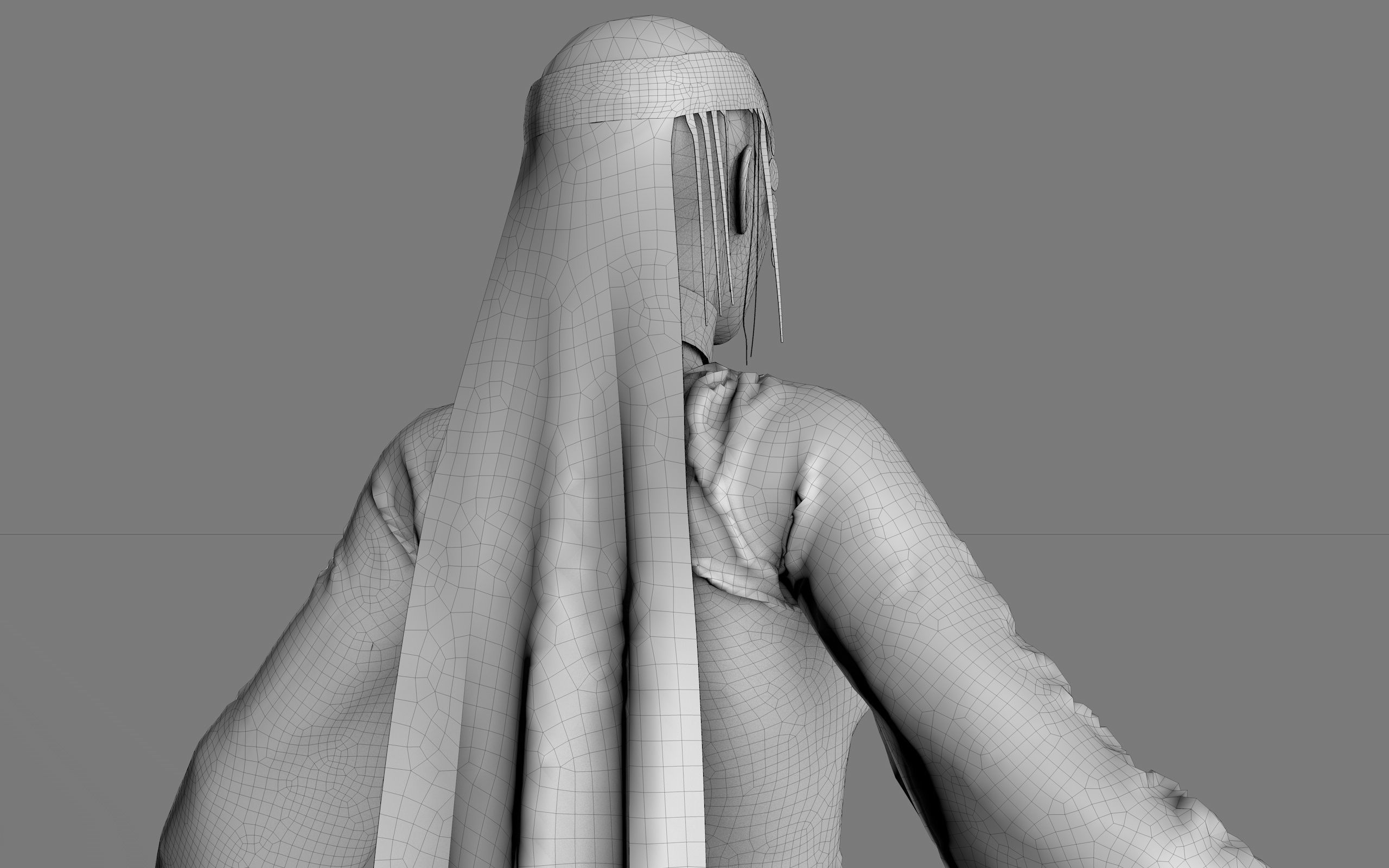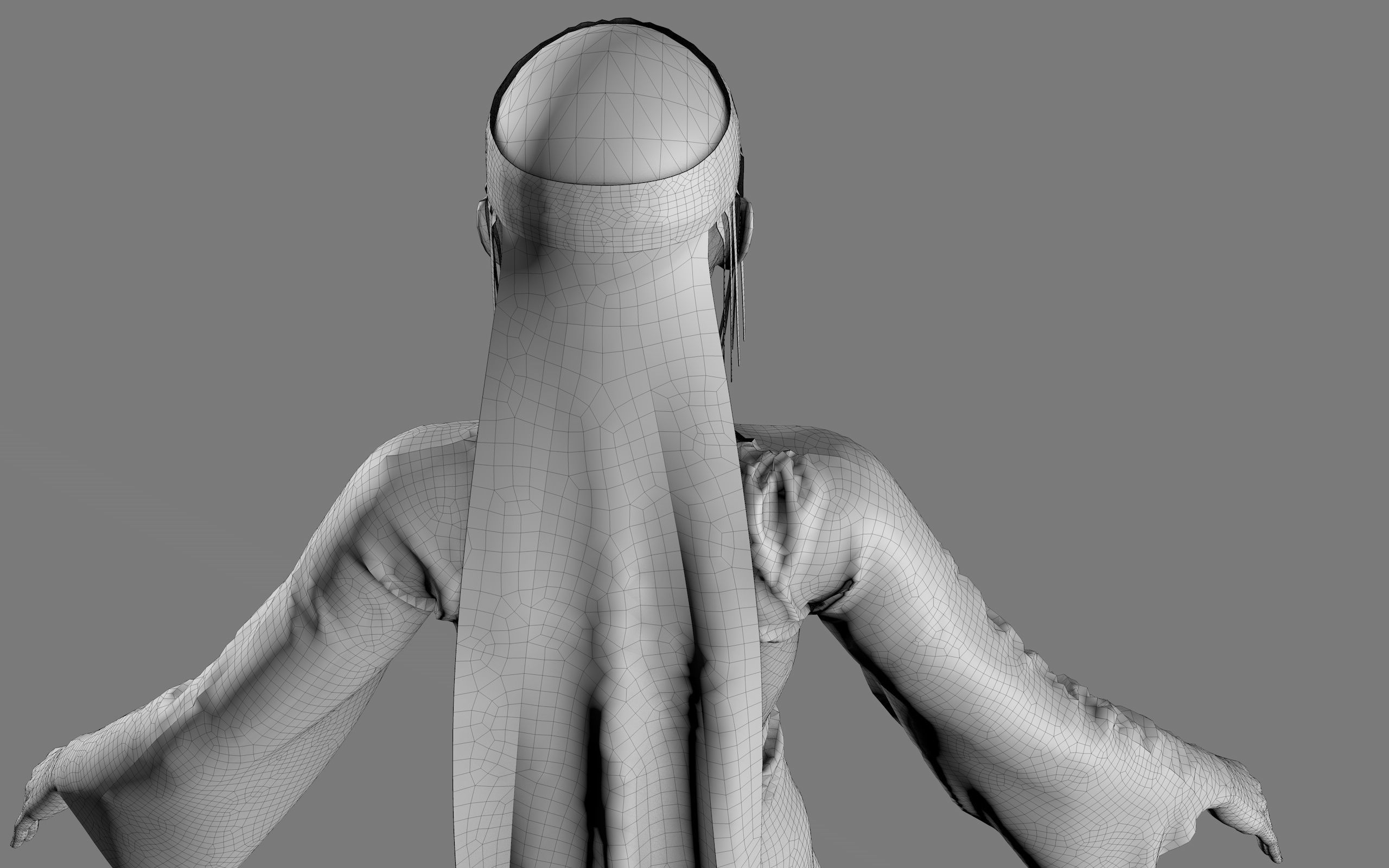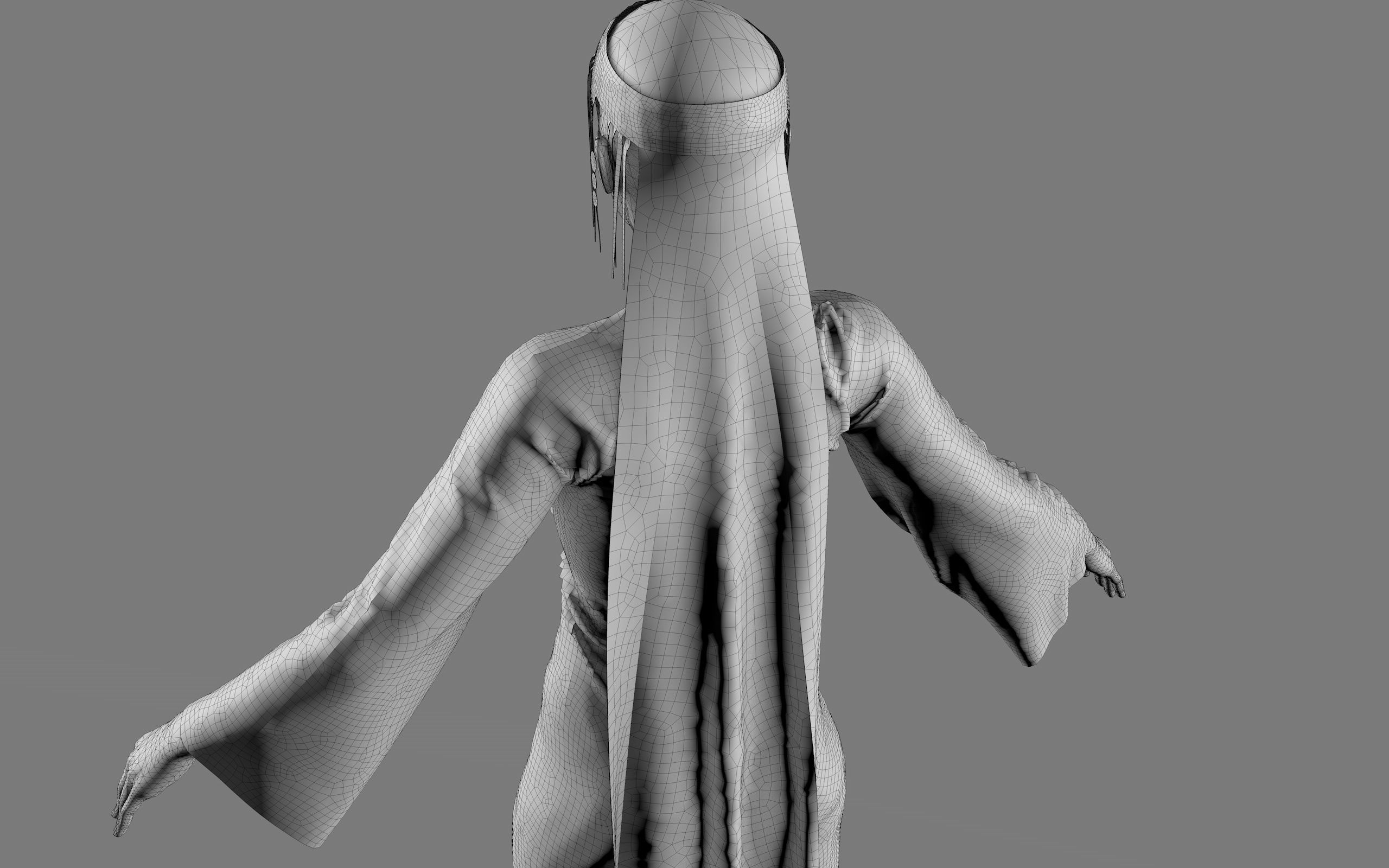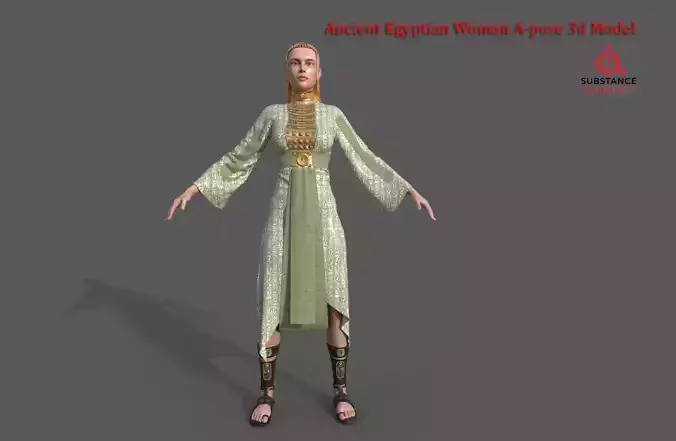
Ancient Egyptian Woman A-pose 3d Model 3D model
Cleopatra VII Thea Philopator (Koinē Greek: Κλεοπάτρα Θεά Φιλοπάτωρ[note 5] lit. Cleopatra father-loving goddess;[note 6] 70/69 BC – 10 August 30 BC) was Queen of the Ptolemaic Kingdom of Egypt from 51 to 30 BC, and its last active ruler.[note 7] A member of the Ptolemaic dynasty, she was a descendant of its founder Ptolemy I Soter, a Macedonian Greek general and companion of Alexander the Great.[note 8] After the death of Cleopatra, Egypt became a province of the Roman Empire, marking the end of the last Hellenistic-period state in the Mediterranean and of the age that had lasted since the reign of Alexander (336–323 BC).[note 9] Her first language was Koine Greek, and she was the only known Ptolemaic ruler to learn the Egyptian language.[note 10].........................................
In 58 BC, Cleopatra presumably accompanied her father, Ptolemy XII Auletes, during his exile to Rome after a revolt in Egypt (a Roman client state) allowed his rival daughter Berenice IV to claim his throne. Berenice was killed in 55 BC when Ptolemy returned to Egypt with Roman military assistance. When he died in 51 BC, the joint reign of Cleopatra and her brother Ptolemy XIII began, but a falling-out between them led to an open civil war. After losing the 48 BC Battle of Pharsalus in Greece against his rival Julius Caesar (a Roman dictator and consul) in Caesar's civil war, the Roman statesman Pompey fled to Egypt. Pompey had been a political ally of Ptolemy XII, but Ptolemy XIII, at the urging of his court eunuchs, had Pompey ambushed and killed before Caesar arrived and occupied Alexandria. Caesar then attempted to reconcile the rival Ptolemaic siblings, but Ptolemy's chief adviser, Potheinos, viewed Caesar's terms as favoring Cleopatra, so his forces besieged her and Caesar at the palace. Shortly after the siege was lifted by reinforcements, Ptolemy XIII died in the Battle of the Nile; Cleopatra's half-sister Arsinoe IV was eventually exiled to Ephesus for her role in carrying out the siege. Caesar declared Cleopatra and her brother Ptolemy XIV joint rulers but maintained a private affair with Cleopatra that produced a son, Caesarion. Cleopatra traveled to Rome as a client queen in 46 and 44 BC, where she stayed at Caesar's villa. After Caesar's assassination, followed shortly afterwards by that of Ptolemy XIV (on Cleopatra's orders), she named Caesarion co-ruler as Ptolemy XV.
In the Liberators' civil war of 43–42 BC, Cleopatra sided with the Roman Second Triumvirate formed by Caesar's grandnephew and heir Octavian, Mark Antony, and Marcus Aemilius Lepidus. After their meeting at Tarsos in 41 BC, the queen had an affair with Antony which produced three children. He carried out the execution of Arsinoe at her request, and became increasingly reliant on Cleopatra for both funding and military aid during his invasions of the Parthian Empire and the Kingdom of Armenia. The Donations of Alexandria declared their children rulers over various erstwhile territories under Antony's triumviral authority. This event, their marriage, and Antony's divorce of Octavian's sister Octavia Minor led to the final war of the Roman Republic. Octavian engaged in a war of propaganda, forced Antony's allies in the Roman Senate to flee Rome in 32 BC, and declared war on Cleopatra. After defeating Antony and Cleopatra's naval fleet at the 31 BC Battle of Actium, Octavian's forces invaded Egypt in 30 BC and defeated Antony, leading to Antony's suicide. When Cleopatra learned that Octavian planned to bring her to his Roman triumphal procession, she killed herself by poisoning, contrary to the popular belief that she was bitten by an asp...................................................
Cleopatra's legacy survives in ancient and modern works of art. Roman historiography and Latin poetry produced a generally critical view of the queen that pervaded later Medieval and Renaissance literature. In the visual arts, her ancient depictions include Roman busts, paintings, and sculptures, cameo carvings and glass, Ptolemaic and Roman coinage, and reliefs. In Renaissance and Baroque art, she was the subject of many works including operas, paintings, poetry, sculptures, and theatrical dramas. She has become a pop culture icon of Egyptomania since the Victorian era, and in modern times, Cleopatra has appeared in the applied and fine arts, burlesque satire, Hollywood films, and brand images for commercial products.
EtymologyThe Latinized form Cleopatra comes from the Ancient Greek Kleopátra (Κλεοπάτρα), meaning glory of her father,[5] from κλέος (kléos, glory) and πατήρ (patḗr, father).[6] The masculine form would have been written either as Kleópatros (Κλεόπατρος) or Pátroklos (Πάτροκλος).[6] Cleopatra was the name of Alexander the Great's sister Cleopatra of Macedonia, as well as the wife of Meleager in Greek mythology, Cleopatra Alcyone.[7] Through the marriage of Ptolemy V Epiphanes and Cleopatra I Syra (a Seleucid princess), the name entered the Ptolemaic dynasty.[8][9] Cleopatra's adopted title Theā́ Philopátōra (Θεᾱ́ Φιλοπάτωρα) means goddess who loves her father.[10][11][note 11]............................................................
Background
Hellenistic portrait of Ptolemy XII Auletes, the father of Cleopatra, in the Louvre, Paris[12]Ptolemaic pharaohs were crowned by the Egyptian high priest of Ptah at Memphis, but resided in the multicultural and largely Greek city of Alexandria, established by Alexander the Great.[13][14][15][note 12] They spoke Greek and governed Egypt as Hellenistic Greek monarchs, refusing to learn the native Egyptian language.[16][17][18][note 10] In contrast, Cleopatra could speak multiple languages by adulthood and was the first Ptolemaic ruler known to learn the Egyptian language.[19][20][18][note 13] Plutarch implies that she also spoke Ethiopian, the language of the Troglodytes, Hebrew (or Aramaic), Arabic, the Syrian language (perhaps Syriac), Median, and Parthian, and she could apparently also speak Latin, although her Roman contemporaries would have preferred to speak with her in her native Koine Greek.[20][18][21][note 14] Aside from Greek, Egyptian, and Latin, these languages reflected Cleopatra's desire to restore North African and West Asian territories that once belonged to the Ptolemaic Kingdom.[22]
Roman interventionism in Egypt predated the reign of Cleopatra.[23][24][25] When Ptolemy IX Lathyros died in late 81 BC, he was succeeded by his daughter Berenice III.[26][27] With opposition building at the royal court against the idea of a sole reigning female monarch, Berenice III accepted joint rule and marriage with her cousin and stepson Ptolemy XI Alexander II, an arrangement made by the Roman dictator Sulla.[26][27] Ptolemy XI had his wife killed shortly after their marriage in 80 BC, and was lynched soon after in the resulting riot over the assassination.[26][28][29] Ptolemy XI, and perhaps his uncle Ptolemy IX or father Ptolemy X Alexander I, willed the Ptolemaic Kingdom to Rome as collateral for loans, so that the Romans had legal grounds to take over Egypt, their client state, after the assassination of Ptolemy XI.[26][30][31] The Romans chose instead to divide the Ptolemaic realm among the illegitimate sons of Ptolemy IX, bestowing Cyprus on Ptolemy of Cyprus and Egypt on Ptolemy XII Auletes.[26][28]

